- Subscribe to BBC Science Focus Magazine
- Previous Issues
- Future tech
- Everyday science
- Planet Earth
- Newsletters

Mission timeline: Voyager’s landmark moments
From its launch in 1977 to becoming the first man-made object to leave the Solar System, the Voyager probes have made some incredible discoveries along their journey through space.
20 August 1977
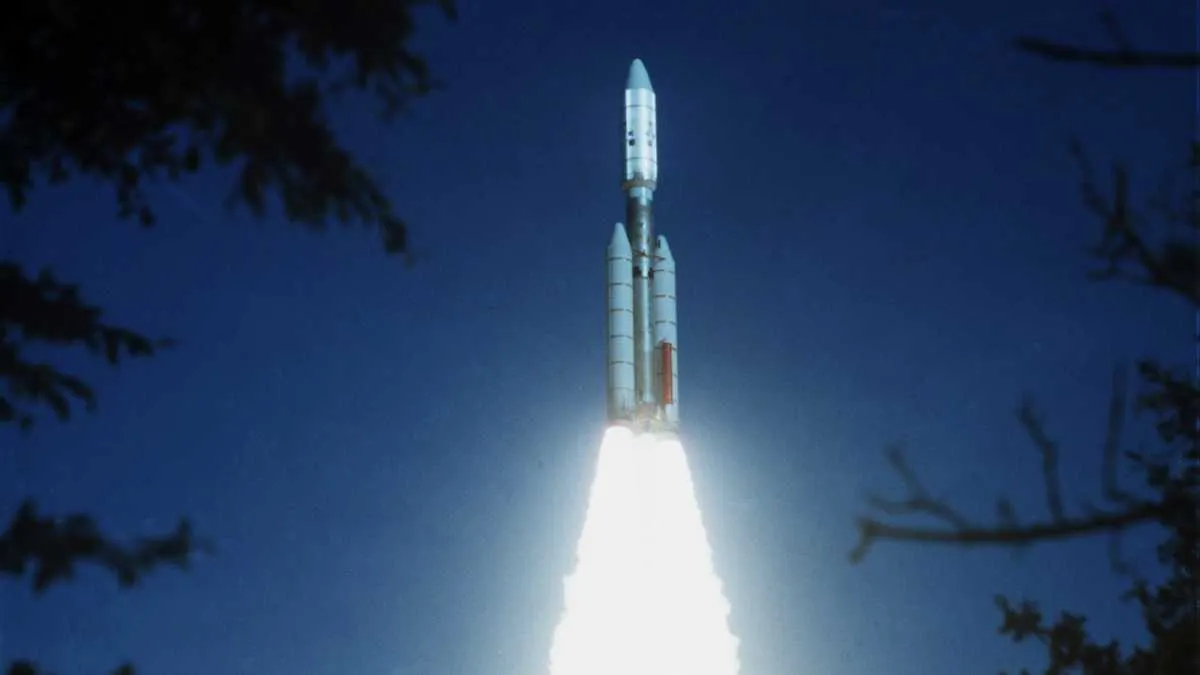
Voyager 2 launches from Cape Canaveral in Florida, on a longer and slower trajectory than its counterpart. Voyager 1 lifts off a couple of weeks later on 5 September, overtaking Voyager 2 in the asteroid belt.
18 September 1977
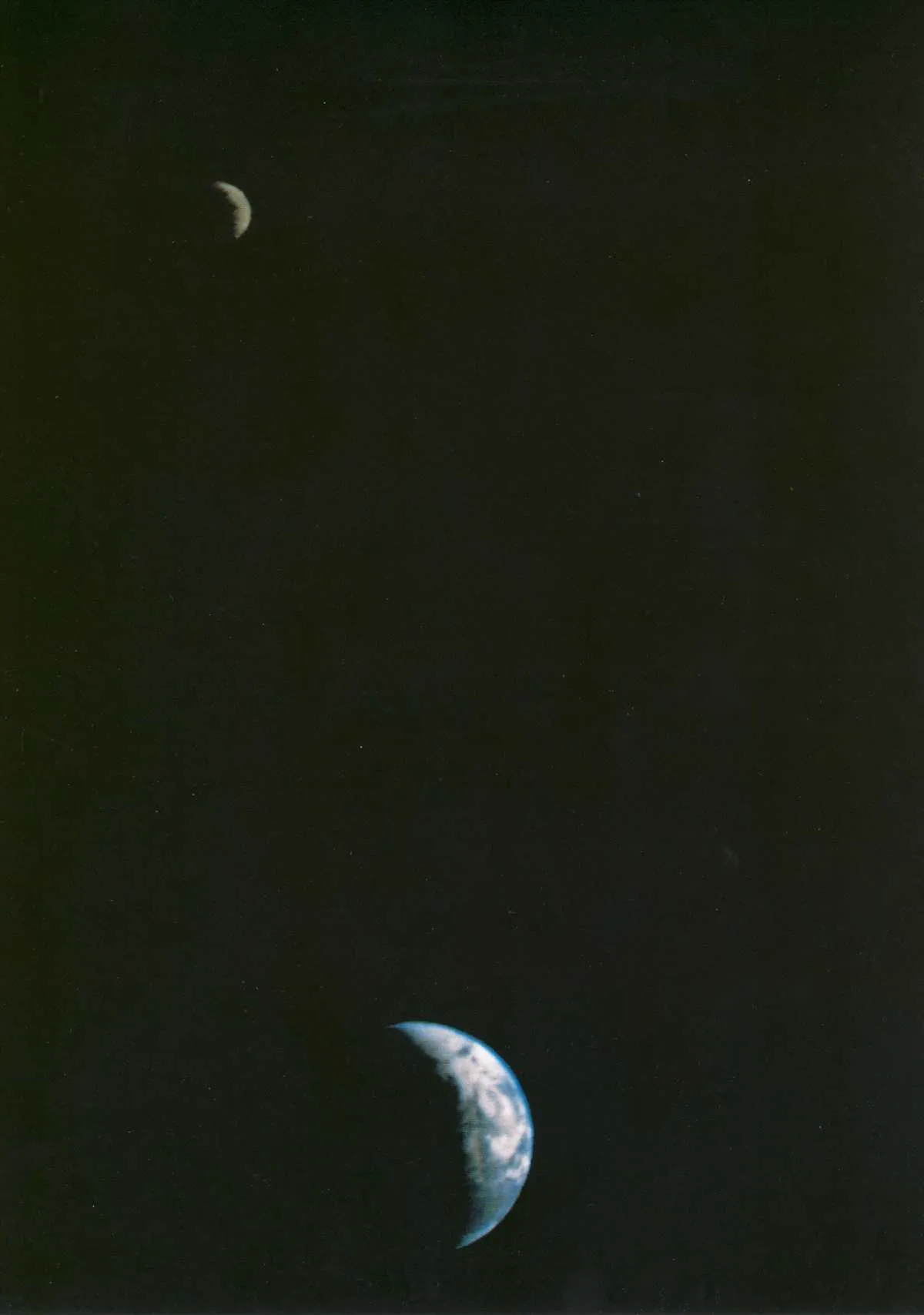
As Voyager 1 leaves Earth, it photographs its home planet from 11.7 million km away. It's the first time Earth and the Moon have been seen in a single frame shot from a spacecraft.
6 January 1979
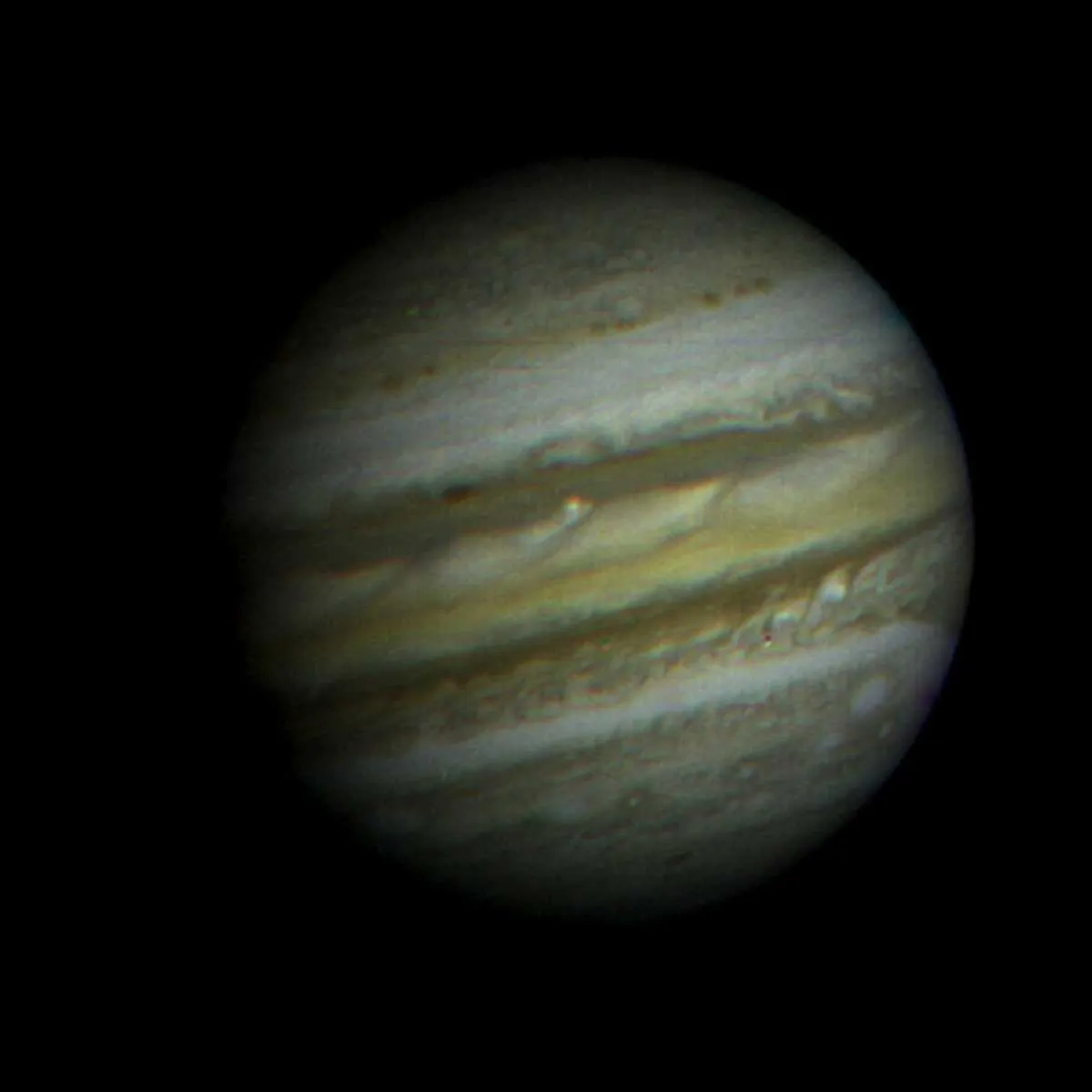
5 March 1979
Voyager 1 snaps the first photo of the mission's first planetary encounter, a portrait of Jupiter from 57.6km away.
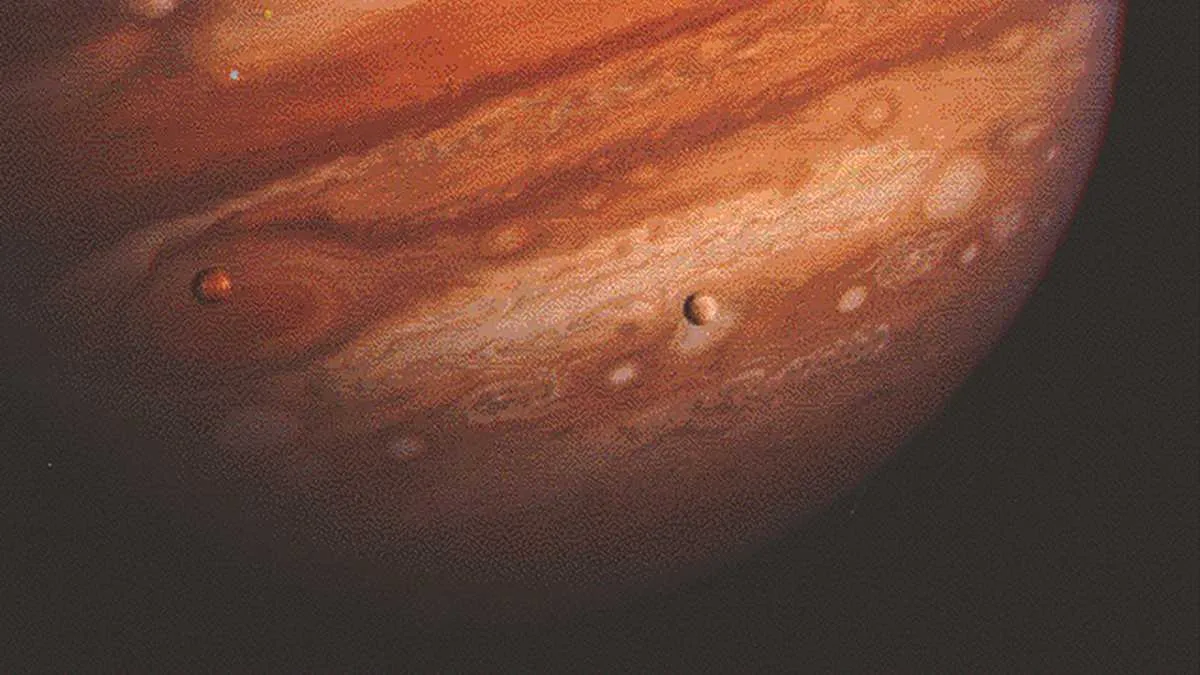
Voyager 1 makes its closest pass of Jupiter; Voyager 2 makes its flyby on 9 July. Together, they reveal new moons, rings and the gargantuan extent of the Jovian magnetosphere.
9 March 1979
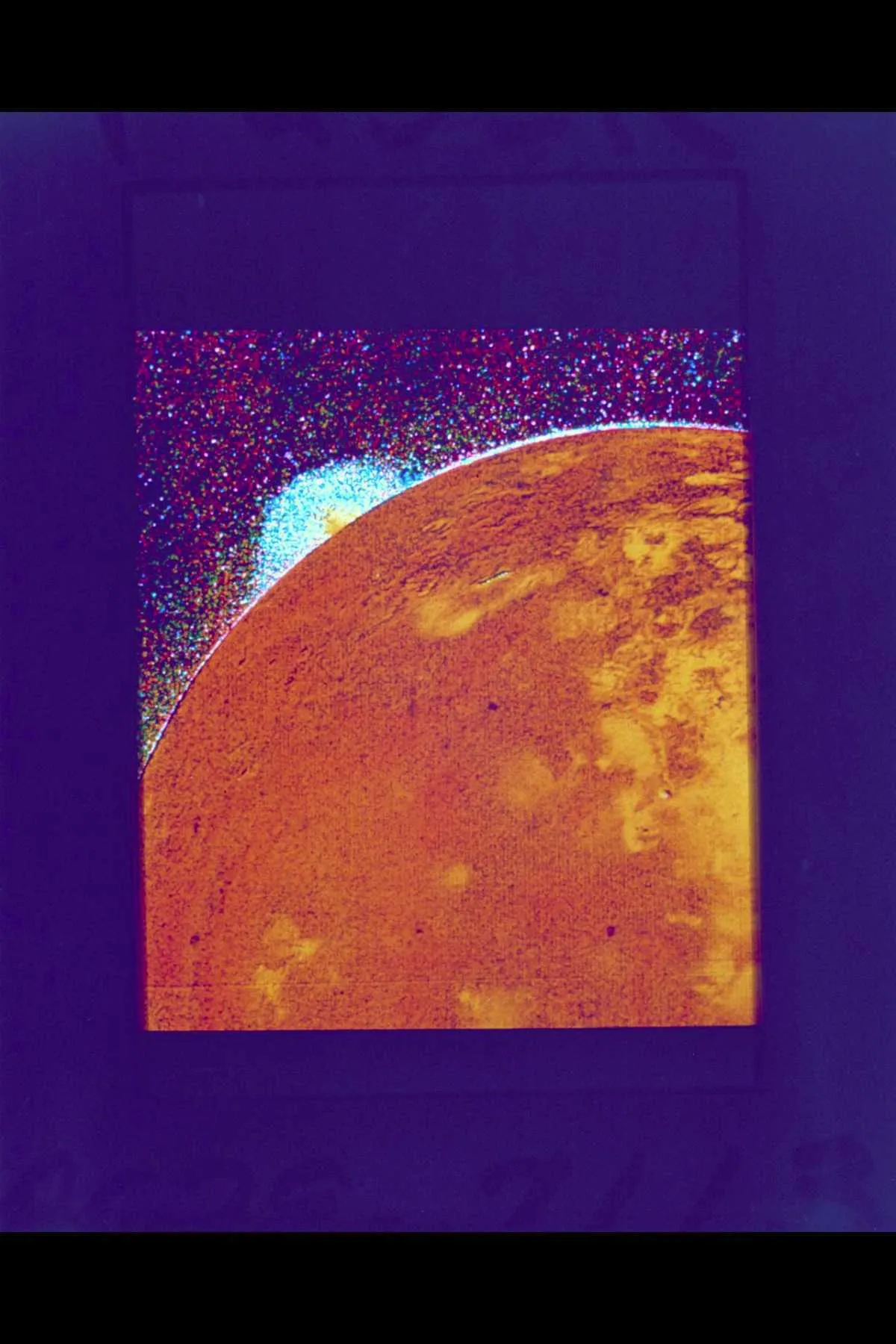
Volcanism is discovered on the Galilean moon Io, from a photo only taken to navigate the spacecraft. It's the first time volcanism has been seen beyond Earth.
11 November 1980
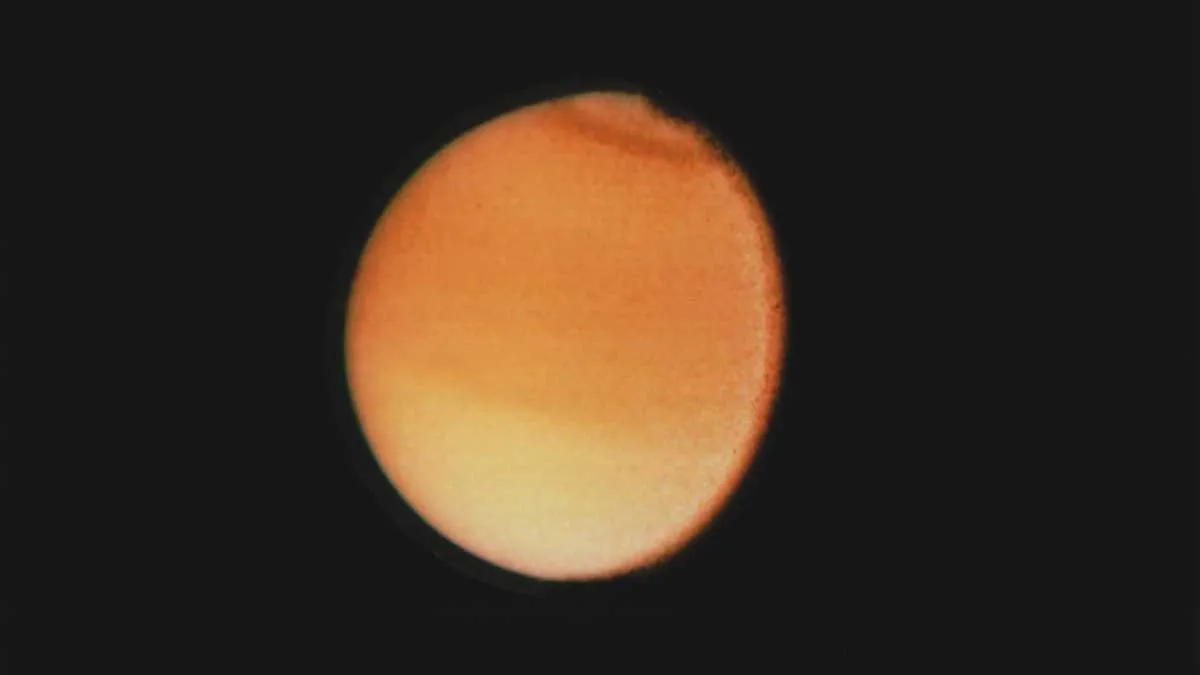
Voyager 1 takes a close look at Saturn’s moon Titan, discovering that it’s not as large as expected. The crown of largest moon in the Solar System passes to Jupiter’s Ganymede.
12 November 1980

Voyager 1 sails past Saturn, with Voyager 2 following on 25 August 1981. They confirm that the planet’s famous rings are neither solid nor liquid, but thin aggregations of water-ice fragments.
24 January 1986

First encounter with Uranus. Voyager 2 discovers a bland planet with an unusual composition, leading to a new classification: ice giant.
25 August 1989

Voyager 2 becomes the first probe to visit Neptune, which also turns out to be an ice giant. The spacecraft discovers that Neptune has partial rings and the strongest winds in the Solar System.
14 February 1990

Voyager 1’s camera is turned on one last time to take a family portrait of our Solar System. Among the images is the now iconic Pale Blue Dot.
17 February 1998
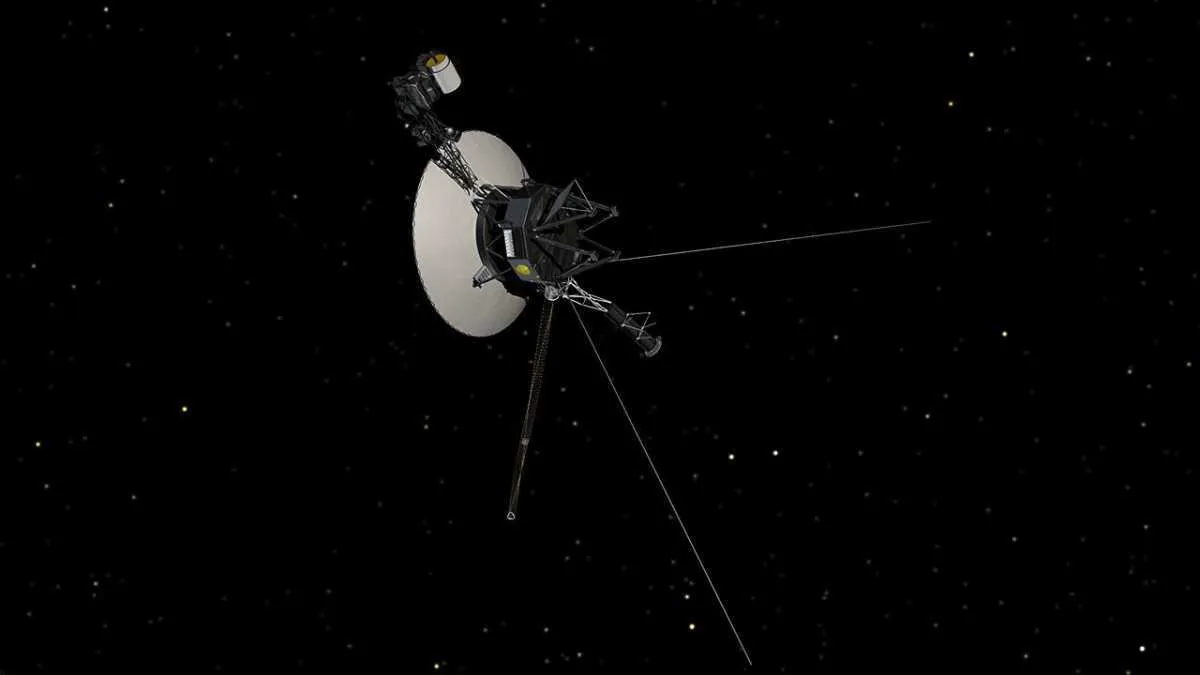
Voyager 1 overtakes Pioneer 10 to become the most distant human-made object in space, 10.4 billion kilometres from Earth.
25 August 2012
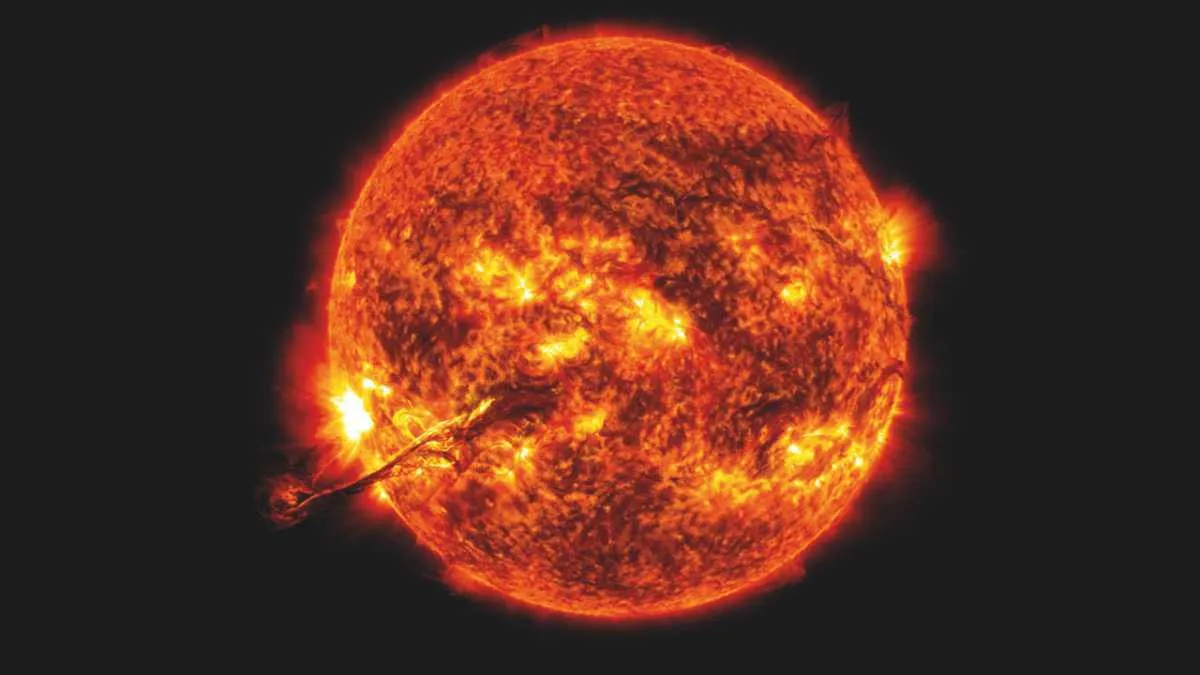
Voyager 1 becomes the first craft to enter interstellar space. NASA is only able to determine this 13 months later, after a coronal mass ejection from the Sun catches up with it.
5 November 2018
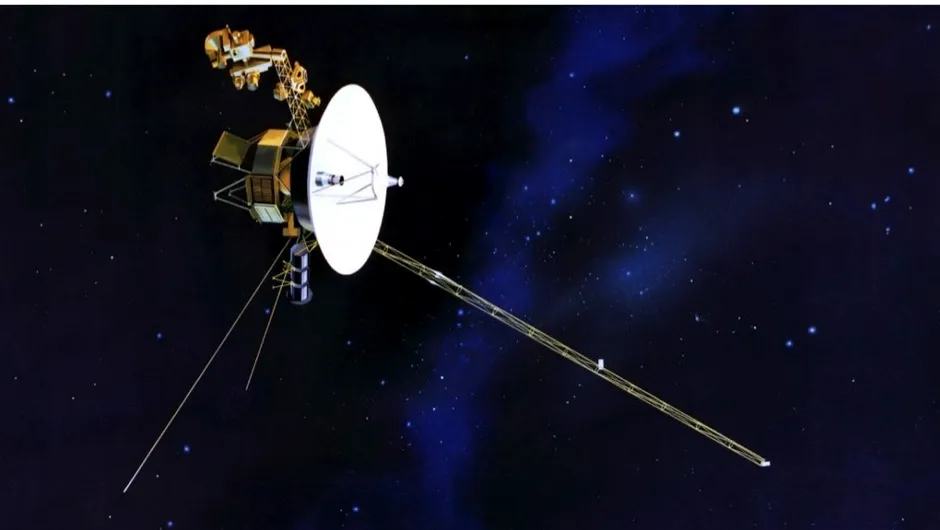
Voyager 2 joins its fellow spacecraft to become only the second man-made object to ' leave the Solar System '. It will be nearly 40,000 years before it comes close to another star
All images © NASA
Follow Science Focus on Twitter , Facebook , Instagram and Flipboard
Share this article

- Terms & Conditions
- Privacy policy
- Cookies policy
- Code of conduct
- Magazine subscriptions
- Manage preferences
Voyager, NASA’s Longest-Lived Mission, Logs 45 Years in Space

This archival image taken at NASA’s Jet Propulsion Laboratory on March 23, 1977, shows engineers preparing the Voyager 2 spacecraft ahead of its launch later that year.
Launched in 1977, the twin Voyager probes are NASA’s longest-operating mission and the only spacecraft ever to explore interstellar space.
NASA’s twin Voyager probes have become, in some ways, time capsules of their era: They each carry an eight-track tape player for recording data, they have about 3 million times less memory than modern cellphones, and they transmit data about 38,000 times slower than a 5G internet connection.
Yet the Voyagers remain on the cutting edge of space exploration. Managed and operated by NASA’s Jet Propulsion Laboratory in Southern California, they are the only probes to ever explore interstellar space – the galactic ocean that our Sun and its planets travel through.
The Sun and the planets reside in the heliosphere, a protective bubble created by the Sun’s magnetic field and the outward flow of solar wind (charged particles from the Sun). Researchers – some of them younger than the two distant spacecraft – are combining Voyager’s observations with data from newer missions to get a more complete picture of our Sun and how the heliosphere interacts with interstellar space.
NASA’s Solar System Interactive lets users see where the Voyagers are right now relative to the planets, the Sun, and other spacecraft. View it yourself here . Credit: NASA/JPL-Caltech
“The heliophysics mission fleet provides invaluable insights into our Sun, from understanding the corona or the outermost part of the Sun’s atmosphere, to examining the Sun’s impacts throughout the solar system, including here on Earth, in our atmosphere, and on into interstellar space,” said Nicola Fox, director of the Heliophysics Division at NASA Headquarters in Washington. “Over the last 45 years, the Voyager missions have been integral in providing this knowledge and have helped change our understanding of the Sun and its influence in ways no other spacecraft can.”
The Voyagers are also ambassadors, each carrying a golden record containing images of life on Earth, diagrams of basic scientific principles, and audio that includes sounds from nature, greetings in multiple languages, and music. The gold-coated records serve as a cosmic “message in a bottle” for anyone who might encounter the space probes. At the rate gold decays in space and is eroded by cosmic radiation, the records will last more than a billion years.
45 Years of Voyager I and II
Launched in 1977, NASA’s twin Voyager spacecraft inspired the world with pioneering visits to Jupiter, Saturn, Uranus, and Neptune. Their journey continues 45 years later as both probes explore interstellar space, the region outside the protective heliosphere created by our Sun. Researchers – some younger than the spacecraft – are now using Voyager data to solve mysteries of our solar system and beyond.

This archival photo shows engineers working on vibration acoustics and pyro shock testing of NASA’s Voyager on Nov. 18, 1976. Credit: NASA/JPL-Caltech

NASA’s Voyager 1 acquired this image of a volcanic explosion on Io on March 4, 1979, about 11 hours before the spacecraft’s closest approach to the moon of Jupiter.

Neptune’s green-blue atmosphere was shown in greater detail than ever before in this image from NASA’s Voyager 2 as the spacecraft rapidly approached its encounter with the giant planet in August 1989.

This updated version of the iconic "Pale Blue Dot" image taken by the Voyager 1 spacecraft uses modern image-processing software and techniques to revisit the well-known Voyager view while attempting to respect the original data and intent of those who planned the images.

This illustrated graphic was made to mark Voyager 1’s entry into interstellar space in 2012. It puts solar system distances in perspective, with the scale bar in astronomical units and each set distance beyond 1 AU (the average distance between the Sun and Earth) representing 10 times the previous distance.

This graphic highlights some of the Voyager mission’s key accomplishments. Credit: NASA/JPL-Caltech Full image details

This graphic provides some of the mission’s key statistics from 2018, when NASA’s Voyager 2 probe exited the heliosphere. Credit: NASA/JPL-Caltech Full image details
Beyond Expectations
Voyager 2 launched on Aug. 20, 1977, quickly followed by Voyager 1 on Sept. 5. Both probes traveled to Jupiter and Saturn, with Voyager 1 moving faster and reaching them first. Together, the probes unveiled much about the solar system’s two largest planets and their moons. Voyager 2 also became the first and only spacecraft to fly close to Uranus (in 1986) and Neptune (in 1989), offering humanity remarkable views of – and insights into – these distant worlds.
While Voyager 2 was conducting these flybys, Voyager 1 headed toward the boundary of the heliosphere. Upon exiting it in 2012 , Voyager 1 discovered that the heliosphere blocks 70% of cosmic rays, or energetic particles created by exploding stars. Voyager 2, after completing its planetary explorations, continued to the heliosphere boundary, exiting in 2018 . The twin spacecraft’s combined data from this region has challenged previous theories about the exact shape of the heliosphere.

Voyager 1 and 2 have accomplished a lot since they launched in 1977. This infographic highlights the mission’s major milestones, including visiting the four outer planets and exiting the heliosphere, or the protective bubble of magnetic fields and particles created by the Sun.
“Today, as both Voyagers explore interstellar space, they are providing humanity with observations of uncharted territory,” said Linda Spilker, Voyager’s deputy project scientist at JPL. “This is the first time we’ve been able to directly study how a star, our Sun, interacts with the particles and magnetic fields outside our heliosphere, helping scientists understand the local neighborhood between the stars, upending some of the theories about this region, and providing key information for future missions.”
The Long Journey
Over the years, the Voyager team has grown accustomed to surmounting challenges that come with operating such mature spacecraft, sometimes calling upon retired colleagues for their expertise or digging through documents written decades ago.
Each Voyager is powered by a radioisotope thermoelectric generator containing plutonium, which gives off heat that is converted to electricity. As the plutonium decays, the heat output decreases and the Voyagers lose electricity. To compensate , the team turned off all nonessential systems and some once considered essential, including heaters that protect the still-operating instruments from the frigid temperatures of space. All five of the instruments that have had their heaters turned off since 2019 are still working, despite being well below the lowest temperatures they were ever tested at.
Get the Latest JPL News
Recently, Voyager 1 began experiencing an issue that caused status information about one of its onboard systems to become garbled. Despite this, the system and spacecraft otherwise continue to operate normally, suggesting the problem is with the production of the status data, not the system itself. The probe is still sending back science observations while the engineering team tries to fix the problem or find a way to work around it.
“The Voyagers have continued to make amazing discoveries, inspiring a new generation of scientists and engineers,” said Suzanne Dodd, project manager for Voyager at JPL. “We don’t know how long the mission will continue, but we can be sure that the spacecraft will provide even more scientific surprises as they travel farther away from the Earth.”
More About the Mission
A division of Caltech in Pasadena, JPL built and operates the Voyager spacecraft. The Voyager missions are a part of the NASA Heliophysics System Observatory, sponsored by the Heliophysics Division of the Science Mission Directorate in Washington.
For more information about the Voyager spacecraft, visit:
https://www.nasa.gov/voyager
News Media Contact
Calla Cofield
Jet Propulsion Laboratory, Pasadena, Calif.
626-808-2469
Voyager 1 Spacecraft's Road to Interstellar Space: A Photo Timeline
Nasa's voyager 1 spacecraft.
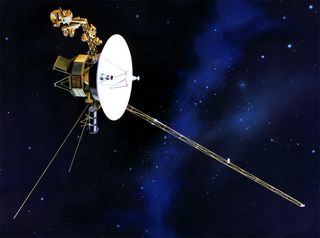
NASA's Voyager 1 spacecraft launched in 1977 and reached interstellar space 35 years later. Take a look at Voyager 1's bold journey into a new space frontier with this SPACE.com timeline. [ See SPACE.com's Compete Coverage: Voyager 1 In Interstellar Space ]
Sept. 5, 1977: Voyager 1 Launch
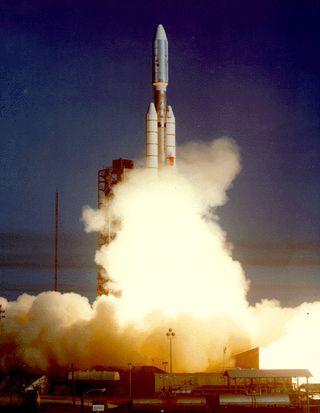
This photo shows NASA's Voyager 2's launch on Aug. 20, 1977. Voyager 1 launched on Sept. 5 of the same year. [ See SPACE.com's Compete Coverage: Voyager 1 In Interstellar Space ]
Sept. 5, 1977: Voyager 1 Snaps Photo of Earth and Moon
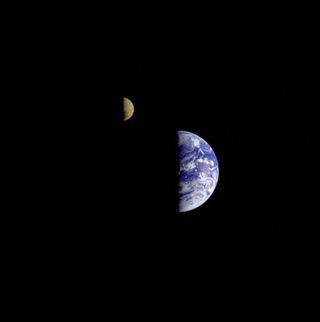
This image of the Earth and moon in a single frame, the first of its kind ever taken by a spacecraft, was recorded on Sept. 18, 1977, by Voyager 1 when it was 7.25 million miles from Earth. The moon is at the top of the picture and beyond the Earth as viewed by Voyager. [ See SPACE.com's Compete Coverage: Voyager 1 In Interstellar Space ]
March 5, 1979: Voyager 1 Makes Jupiter Flyby
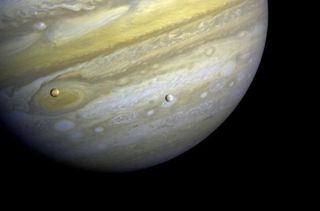
Voyager 1 took photos of Jupiter and two of its satellites (Io, left, and Europa). The new study says that moons orbiting a gas giant planet greater than 8 Jupiter masses could help astronomers detect a rogue planet. [ See SPACE.com's Compete Coverage: Voyager 1 In Interstellar Space ]
Nov. 12, 1980: Voyager 1 Flies By Saturn

NASA's Voyager 1 spacecraft revealed the kinks in one of Saturn's narrowest rings. The Voyager 1 image (left) was released on Nov. 12, 1980. The closer view of the F ring (right) was obtained by NASA's Cassini spacecraft on April 13, 2005. The moon Pandora is to the left (exterior) of the ring and the moon Prometheus is to the right (interior) of the ring. [ See SPACE.com's Compete Coverage: Voyager 1 In Interstellar Space ]
1982: NASA Upgrades Deep Space Network Antennas
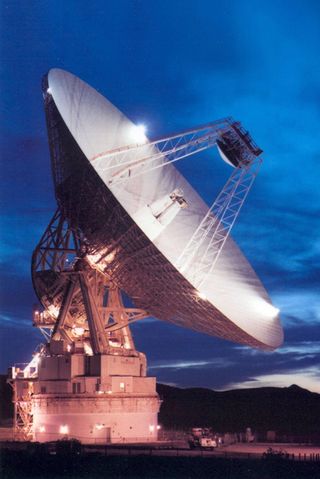
In 1982, NASA upgraded its Deep Space Network of antennas which it uses to control and receive messages from Voyager 1 and its twin Voyager 2. [ See SPACE.com's Compete Coverage: Voyager 1 In Interstellar Space ]
Jan. 1, 1990: Voyager Begins Extended' Interstellar Mission '
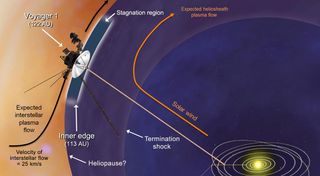
This artist's concept shows plasma flows around NASA's Voyager 1 spacecraft as it gets close to entering interstellar space. The orange arrow shows the direction of the solar wind. Image released Dec. 3, 2012. [ See SPACE.com's Compete Coverage: Voyager 1 In Interstellar Space ]
Get the Space.com Newsletter
Breaking space news, the latest updates on rocket launches, skywatching events and more!
Feb. 14, 1990: Voyager Takes Final Solar System Portrait
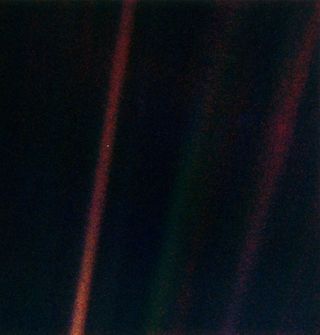
This narrow-angle color image of the Earth s a part of the first ever "portrait" of the solar system taken by Voyager 1. The spacecraft acquired a total of 60 frames for a mosaic of the solar system from a distance of more than 4 billion miles from Earth and about 32 degrees above the ecliptic. Image released Feb. 14, 1990. [ See SPACE.com's Compete Coverage: Voyager 1 In Interstellar Space ]
Feb. 17, 1998: Voyager 1 passes Pioneer 10

On Feb. 17, 1998, Voyager 1 became the farthest manmade object in space when it passed Pioneer 10 on the way out of the solar system. [ See SPACE.com's Compete Coverage: Voyager 1 In Interstellar Space ]
Voyager Signal Spotted By Earth Radio Telescopes

In 1990, Voyager 1 took the famous "Pale Blue Dot" picture looking back at Earth. In 2013, the Very Long Baseline Array got the reverse-angle shot — this radio telescope image showing the signal of the spacecraft as a similar point of light. Image released Sept. 12, 2013. [ See SPACE.com's Compete Coverage: Voyager 1 In Interstellar Space ]
August 2012: Voyager Enters Interstellar Space

This artist's concept depicts NASA's Voyager 1 spacecraft entering interstellar space, or the space between stars. Interstellar space is dominated by the plasma, or ionized gas, that was ejected by the death of nearby giant stars millions of years ago. The environment inside our solar bubble is dominated by the plasma exhausted by our sun, known as the solar wind. The interstellar plasma is shown with an orange glow similar to the color seen in visible-light images from NASA's Hubble Space Telescope that show stars in the Orion nebula traveling through interstellar space. Image released Sept. 12, 2013. [ See SPACE.com's Compete Coverage: Voyager 1 In Interstellar Space ]
Join our Space Forums to keep talking space on the latest missions, night sky and more! And if you have a news tip, correction or comment, let us know at: [email protected].
Current page: Page 1
Tariq is the Editor-in-Chief of Space.com and joined the team in 2001, first as an intern and staff writer, and later as an editor. He covers human spaceflight, exploration and space science, as well as skywatching and entertainment. He became Space.com's Managing Editor in 2009 and Editor-in-Chief in 2019. Before joining Space.com, Tariq was a staff reporter for The Los Angeles Times covering education and city beats in La Habra, Fullerton and Huntington Beach. In October 2022, Tariq received the Harry Kolcum Award for excellence in space reporting from the National Space Club Florida Committee. He is also an Eagle Scout (yes, he has the Space Exploration merit badge) and went to Space Camp four times as a kid and a fifth time as an adult. He has journalism degrees from the University of Southern California and New York University. You can find Tariq at Space.com and as the co-host to the This Week In Space podcast with space historian Rod Pyle on the TWiT network . To see his latest project, you can follow Tariq on Twitter @tariqjmalik .
Boeing's Starliner rolls out to pad for June 1 astronaut launch (photos)
Boeing Starliner capsule's 1st astronaut mission cleared for June 1 liftoff
Elusive medium-size black holes may form in dense 'birthing nests'
Most Popular
- 2 How NASA's OSIRIS-APEX asteroid probe survived its 1st close encounter with the sun
- 3 James Webb Space Telescope spots the 2 earliest galaxies ever seen (image)
- 4 Boeing's Starliner rolls out to pad for June 1 astronaut launch (photos)
- 5 Japan loses contact with Akatsuki, humanity's only active Venus probe

Suggested Searches
- Climate Change
- Expedition 64
- Mars perseverance
- SpaceX Crew-2
- International Space Station
- View All Topics A-Z
Humans in Space
Earth & climate, the solar system, the universe, aeronautics, learning resources, news & events.

NASA Mission Flies Over Arctic to Study Sea Ice Melt Causes
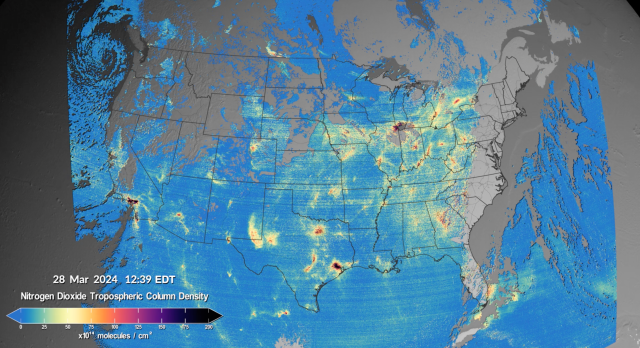
NASA Releases New High-Quality, Near Real-Time Air Quality Data

Twin NASA Satellites Ready to Help Gauge Earth’s Energy Balance
- Search All NASA Missions
- A to Z List of Missions
- Upcoming Launches and Landings
- Spaceships and Rockets
- Communicating with Missions
- James Webb Space Telescope
- Hubble Space Telescope
- Why Go to Space
- Astronauts Home
- Commercial Space
- Destinations
- Living in Space
- Explore Earth Science
- Earth, Our Planet
- Earth Science in Action
- Earth Multimedia
- Earth Science Researchers
- Pluto & Dwarf Planets
- Asteroids, Comets & Meteors
- The Kuiper Belt
- The Oort Cloud
- Skywatching
- The Search for Life in the Universe
- Black Holes
- The Big Bang
- Dark Energy & Dark Matter
- Earth Science
- Planetary Science
- Astrophysics & Space Science
- The Sun & Heliophysics
- Biological & Physical Sciences
- Lunar Science
- Citizen Science
- Astromaterials
- Aeronautics Research
- Human Space Travel Research
- Science in the Air
- NASA Aircraft
- Flight Innovation
- Supersonic Flight
- Air Traffic Solutions
- Green Aviation Tech
- Drones & You
- Technology Transfer & Spinoffs
- Space Travel Technology
- Technology Living in Space
- Manufacturing and Materials
- Science Instruments
- For Kids and Students
- For Educators
- For Colleges and Universities
- For Professionals
- Science for Everyone
- Requests for Exhibits, Artifacts, or Speakers
- STEM Engagement at NASA
- NASA's Impacts
- Centers and Facilities
- Directorates
- Organizations
- People of NASA
- Internships
- Our History
- Doing Business with NASA
- Get Involved
- Aeronáutica
- Ciencias Terrestres
- Sistema Solar
- All NASA News
- Video Series on NASA+
- Newsletters
- Social Media
- Media Resources
- Upcoming Launches & Landings
- Virtual Events
- Sounds and Ringtones
- Interactives
- STEM Multimedia

NASA’s Hubble Temporarily Pauses Science

Space Station Research Advances NASA’s Plans to Explore the Moon, Mars

Welcome Back to Planet Earth, Expedition 70 Crew!

Astronaut Exercise

Ongoing Venus Volcanic Activity Discovered With NASA’s Magellan Data

C.12 Planetary Instrument Concepts for the Advancement of Solar System Observations POC Change
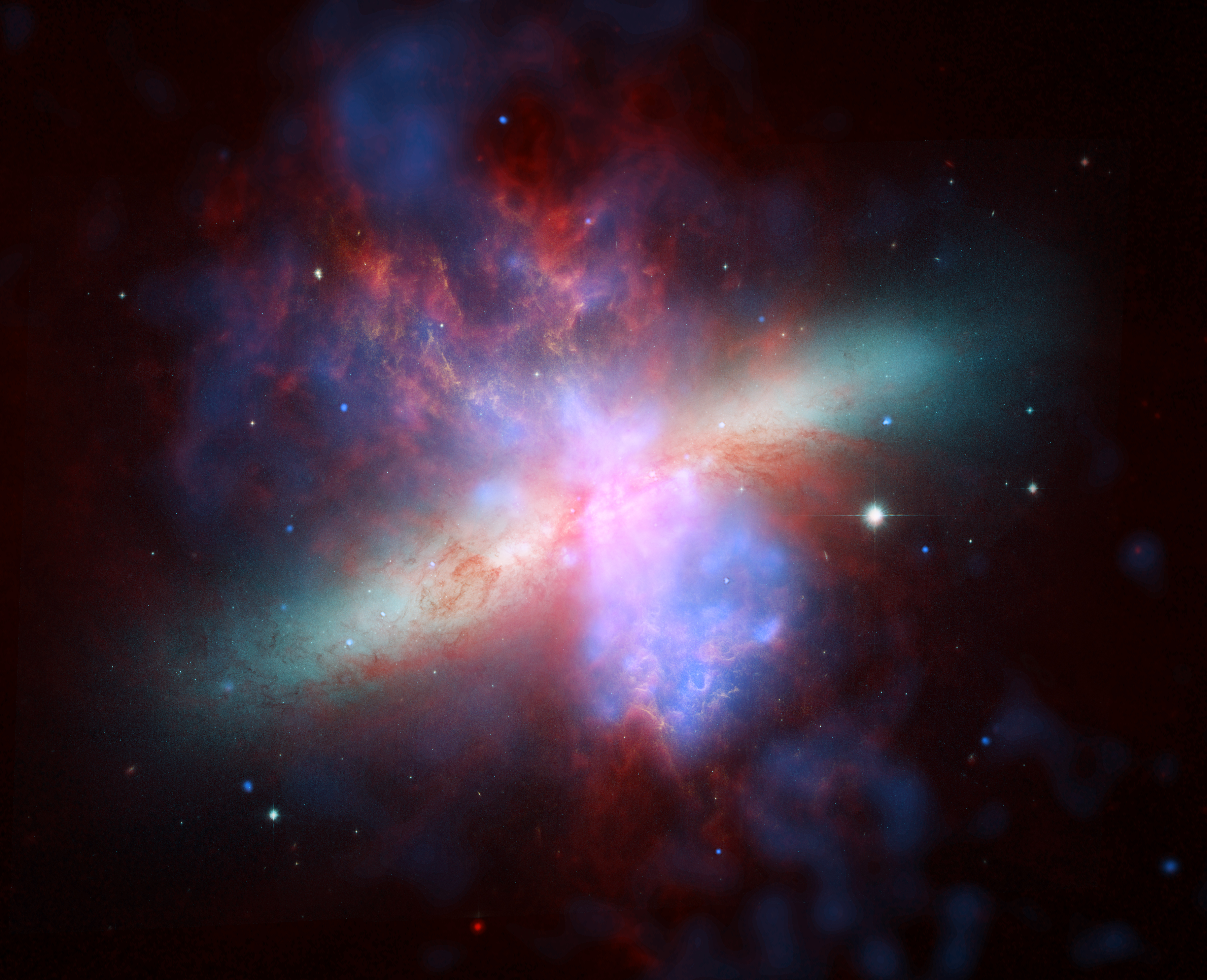
June’s Night Sky Notes: Constant Companions: Circumpolar Constellations, Part III

What’s Up: June 2024 Skywatching Tips from NASA
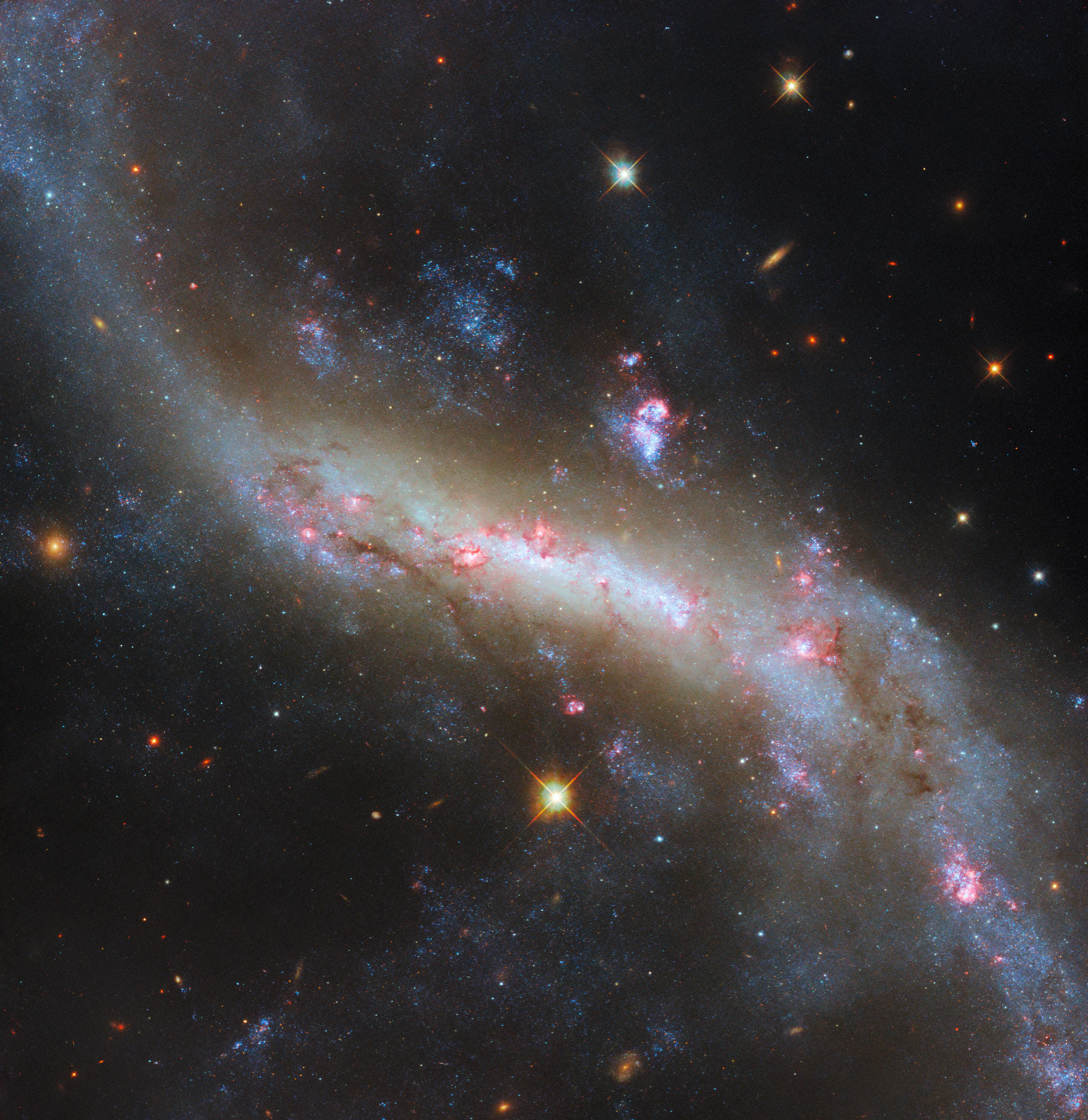
Hubble Views the Lights of a Galactic Bar
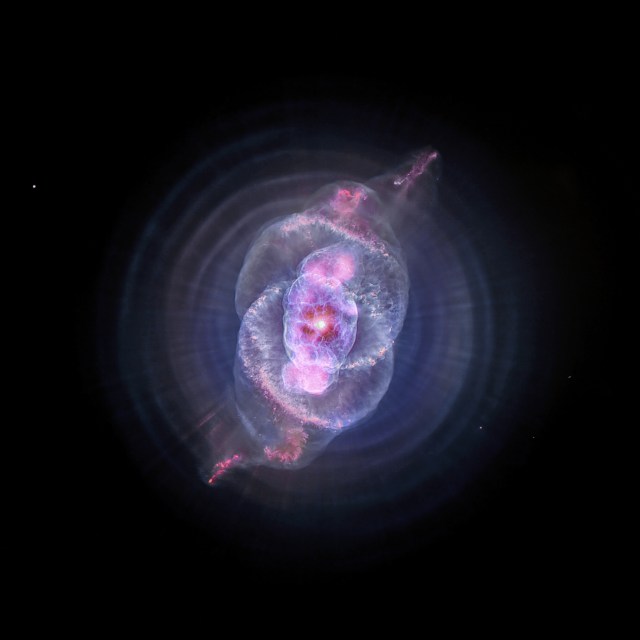
Travel Through Data From Space in New 3D Instagram Experiences
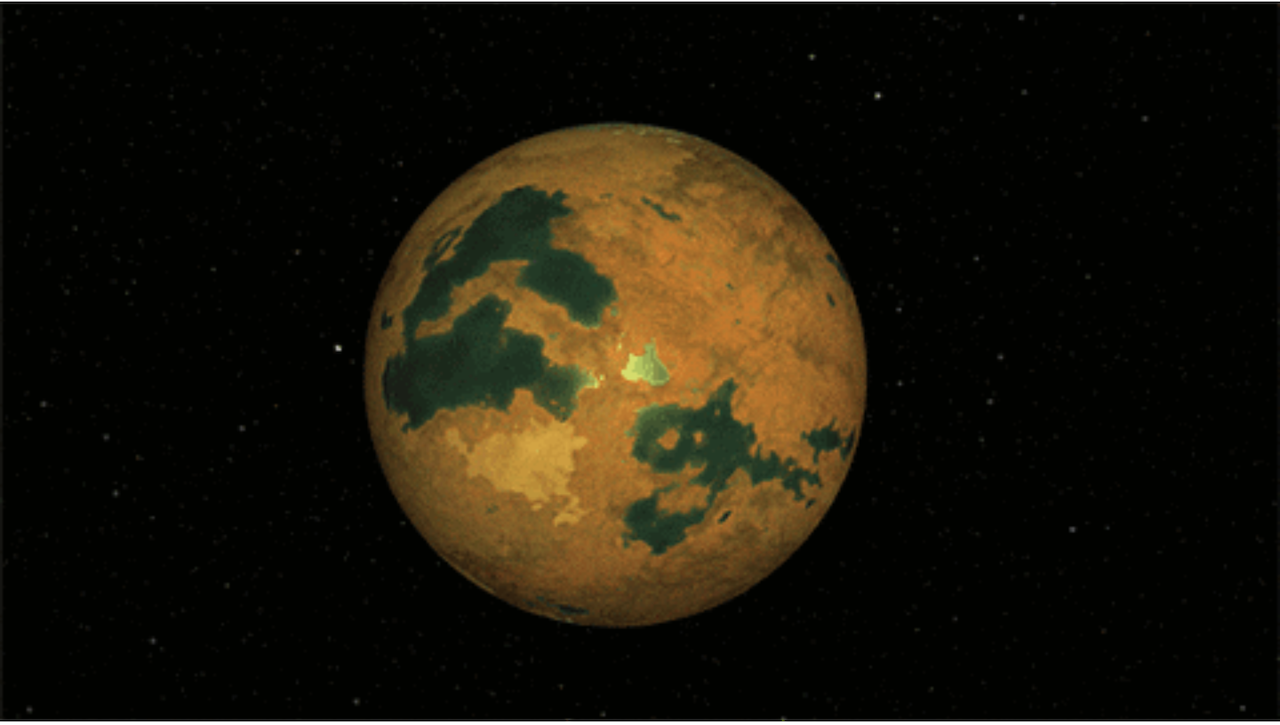
Discovery Alert: Spock’s Home Planet Goes ‘Poof’

NASA, Industry to Start Designing More Sustainable Jet Engine Core

Aviary: A New NASA Software Platform for Aircraft Modelling

NASA’s X-59 Passes Milestone Toward Safe First Flight

Tech Today: Measuring the Buzz, Hum, and Rattle

NASA to Measure Moonquakes With Help From InSight Mars Mission

NASA Around the World: Interns Teach Virtual Lessons in Kenya

The Moon and Amaey Shah
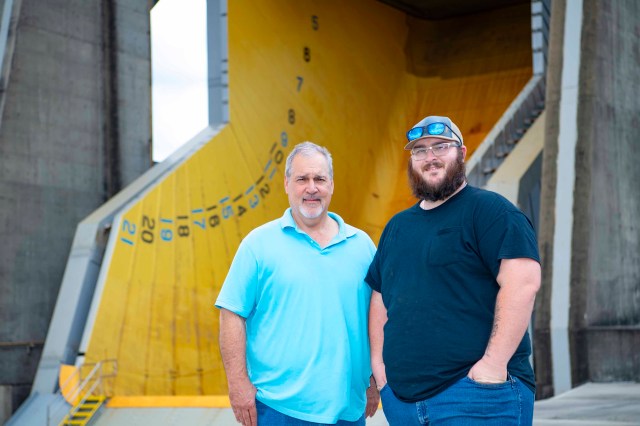
NASA Stennis Helps Family Build a Generational Legacy

Diez maneras en que los estudiantes pueden prepararse para ser astronautas

Astronauta de la NASA Marcos Berríos

Resultados científicos revolucionarios en la estación espacial de 2023
40 years ago: voyager 1 explores saturn, johnson space center.
Today, Voyager 1 is the most distant spacecraft from Earth, more than 14 billion miles away and continuing on its journey out of our solar system. Forty years ago, it made its closest approach to Saturn. Although it was not the first to explore the giant ringed planet, as the Pioneer 11 spacecraft completed the first flyby in 1979, Voyager carried sophisticated instruments to conduct more in-depth investigations. NASA’s Jet Propulsion Laboratory in Southern California managed the two Voyager spacecraft launched in 1977 to explore Jupiter and Saturn. Voyager 2 went on to investigate Uranus and Neptune as well, taking advantage of a rare planetary alignment that occurs once every 175 years that enabled the spacecraft to use the gravity of one planet to redirect it to the next.
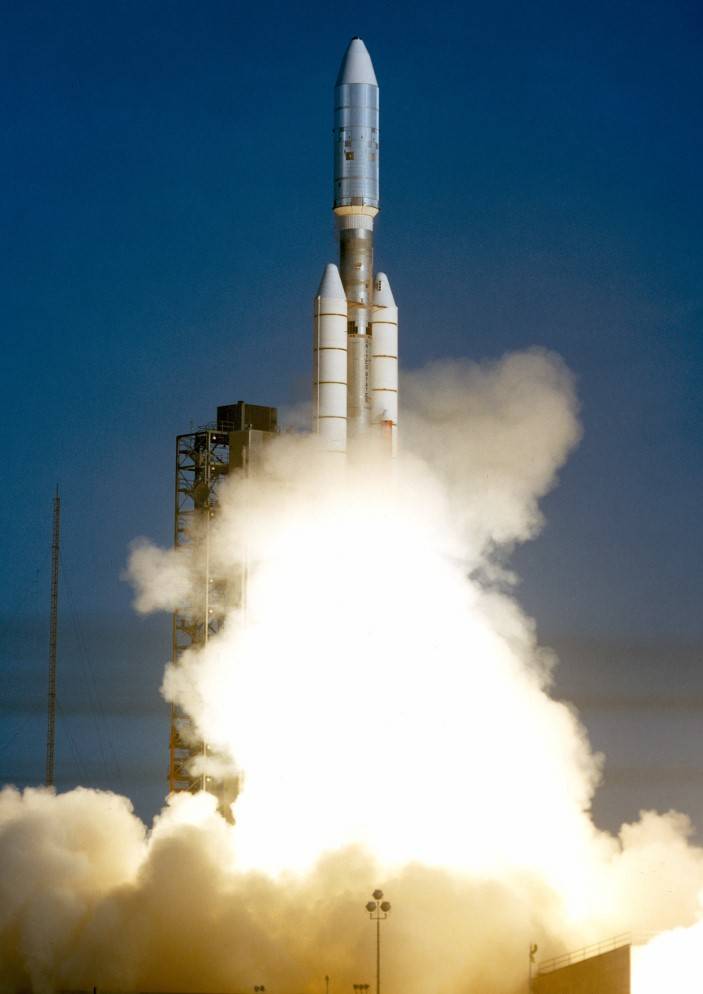
To carry out its studies during the planetary encounters as well as while cruising through interplanetary space, Voyager 1 carried a suite of 11 instruments, including:
- an imaging science system consisting of narrow-angle and wide-angle cameras to photograph the planets and their satellites;
- a radio science system to determine the planets’ physical properties;
- an infrared interferometer spectrometer to investigate local and global energy balance and atmospheric composition;
- an ultraviolet spectrometer to measure atmospheric properties;
- a magnetometer to analyze the planets’ magnetic fields and interactions with the solar wind;
- a plasma spectrometer to investigate microscopic properties of plasma ions;
- a low energy charged particle device to measure fluxes and distributions of ions;
- a cosmic ray detection system to determine the origin and behavior of cosmic radiation;
- a planetary radio astronomy investigation to study radio emissions from Jupiter;
- a photopolarimeter to measure the planets’ surface compositions; and
- a plasma wave system to study the planets’ magnetospheres.
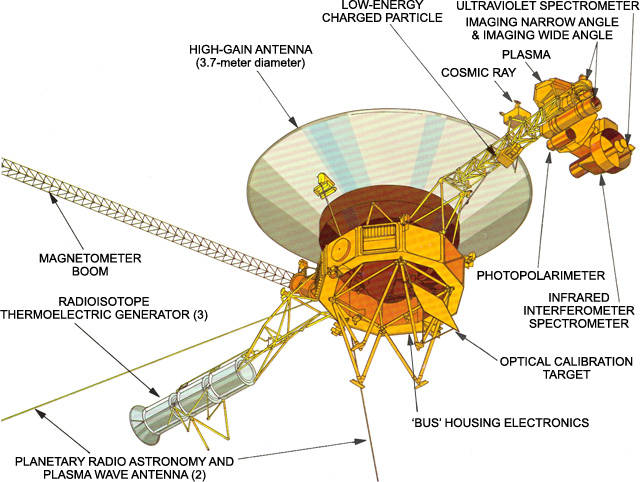
Two weeks after its launch from the Cape Canaveral Air Force Station in Florida on Sep. 5, 1977, Voyager 1 turned its cameras back toward its home planet and took the first single-frame image of the Earth-Moon system, providing a taste of future discoveries at the outer planets. The spacecraft crossed the asteroid belt without incident between Dec. 10, 1977, and Sep. 8, 1978, and flew by Jupiter on March 5, 1979. During the four-month encounter, Voyager 1 returned 19,000 photographs of the giant planet, its four largest satellites, discovered two new moons, and found a thin ring encircling Jupiter. The spacecraft’s instruments recorded a wealth of scientific data that greatly expanded our knowledge of the planet. After a 17-month interplanetary cruise, Voyager 1 began its Saturn observations on Aug. 22, 1980, still 68 million miles from the planet. Because of its interest to scientists, mission planners chose the spacecraft’s trajectory to make a close flyby of Saturn’s largest moon Titan, the only planetary satellite with a dense atmosphere, just before the closest approach to the planet itself. This trajectory meant that Voyager 1 would pass over Saturn’s south pole and the gravity assist would send it out of the ecliptic, the plane where the solar system’s planets reside, thus precluding further planetary encounters.
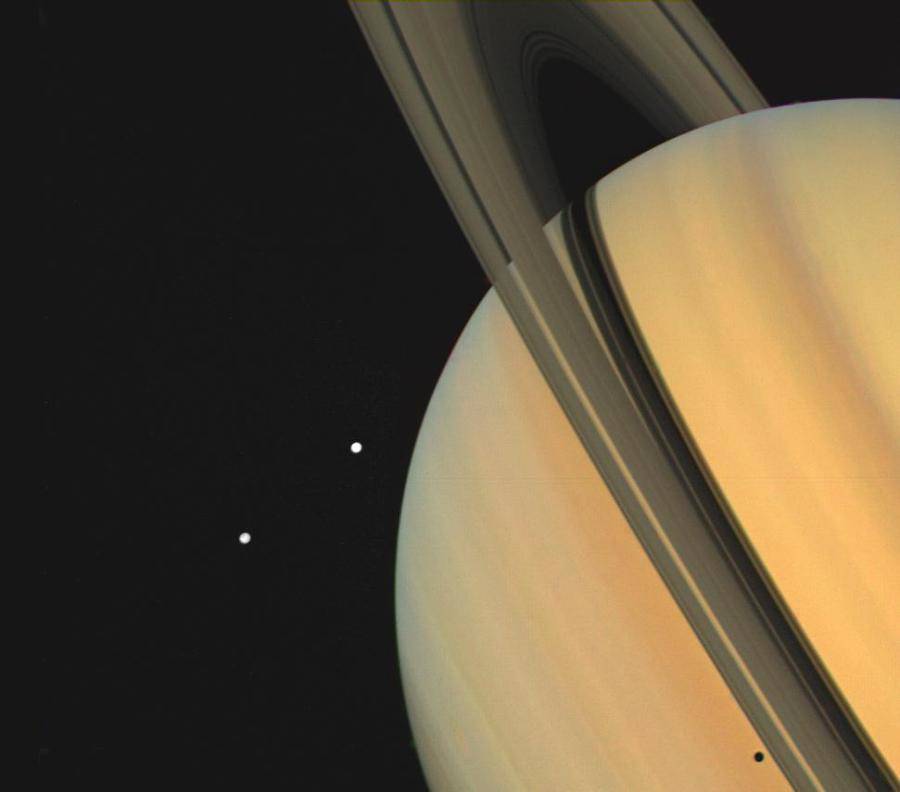
During its approach to Saturn, Voyager 1 returned spectacular images of the planet and ever-more detailed photographs of its rings. These revealed structural features of the various rings, indicating distinctive compositions of each, in particular with regard to particle size. The broad rings easily identifiable from Earth were seen to be composed of thousands of smaller ringlets. Observations of the outer F-ring, discovered by Pioneer 11 the previous year, showed it to have a braided pattern, its small particles perturbed by two newly discovered co-orbiting shepherd moons. Images of Saturn’s atmosphere showed it to be more dynamic than previously expected. Voyager’s instruments indicated that the planet’s atmosphere is composed mainly of hydrogen, with about 11% helium and traces of other gases. The spacecraft observed wind velocities of up 1,100 miles per hour and precisely measured the planet’s rotation at 10 hours and 39.4 minutes.
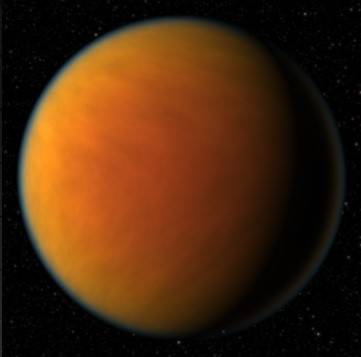
On Nov. 12, about 18 hours before making its closest encounter with Saturn, Voyager 1 turned its attention to one of the high-priority science targets of the encounter, Titan, passing within 4,034 miles of the planet’s largest moon. The spacecraft’s cameras observed an orange haze obscuring the planet’s surface, with detached haze layers up to 300 miles above the thicker atmosphere. The instruments measured the atmospheric composition at the surface as mostly nitrogen with about 10% methane and traces of hydrocarbons, the pressure at the surface 60% greater than Earth’s mean sea level pressure, and surface temperatures around 93 K (-293 degrees Fahrenheit). Voyager 1 measured Titan’s diameter at 3,194 miles and determined its density indicated a composition of roughly equal proportions of rock and water ice. The spacecraft then made its closest approach of 78,000 miles to Saturn’s cloud tops, swung behind the planet, and began its outbound journey. Saturn’s gravity imparted enough acceleration on Voyager 1 that it achieved escape velocity from the solar system.
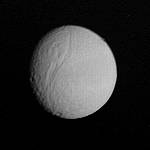
Voyager 1 studied many of Saturn’s smaller icy moons during the encounter and discovered three new ones, bringing the total number of known satellites at the time to 15. In order of study during the encounter and the closest distance to the spacecraft, these moons were: Tethys (258,340 miles), Mimas (54,965 miles), Enceladus (125,570 miles), Dione (100,000 miles), Rhea (45,980 miles), and Hyperion (547,200 miles). These moons range in size from 950 miles in diameter for Rhea to 180-mile-wide Hyperion. Voyager also observed 900-mile-wide outer icy moon Iapetus from a distance of 1.5 million miles. These moons are composed of a mixture of ice and rock, and most show heavily cratered surfaces with the exception of Enceladus. Iapetus displays two very different hemispheres, a dark leading side, and a much brighter trailing side, while the unique surface feature on Mimas is a large crater one-third the diameter of the moon itself.
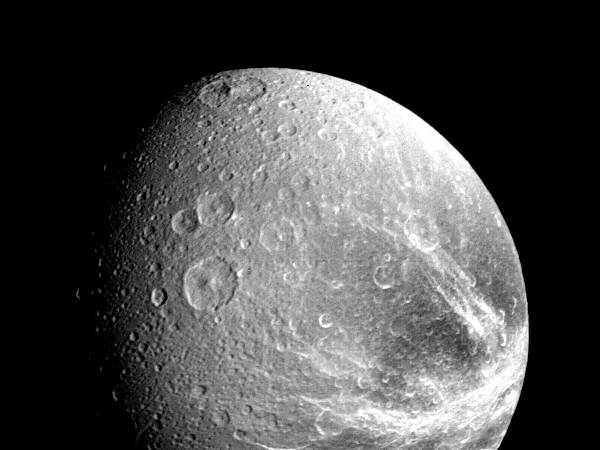
Four days after its closest approach, the spacecraft took a magnificent image of Saturn and its rings from a perspective never seen from Earth, the planet in a crescent phase with its night side dimly illuminated by ring-shine, sunlight reflected from the rings. Voyager 1 completed its observations of the Saturn system on Dec. 14, 1980.
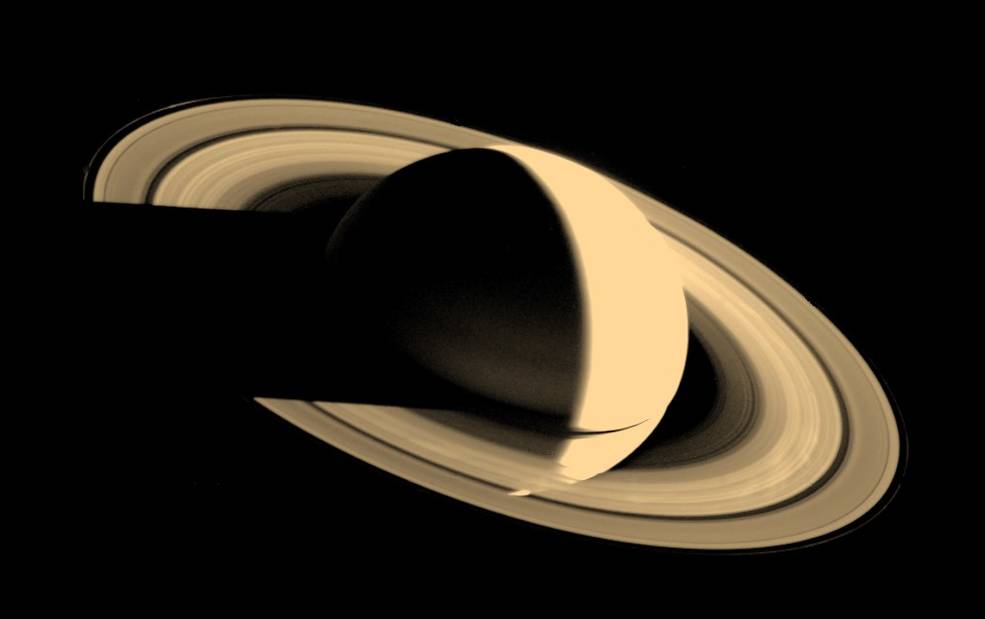
On Feb. 14, 1990, more than 12 years after it began its journey from Earth and shortly before its cameras were permanently turned off to conserve power, Voyager 1 spun around and pointed them back into the solar system. In a mosaic of 60 images, it captured a “family portrait” of six of the solar system’s planets, including a pale blue dot called Earth more than 3.7 billion miles away. Fittingly, these were the last pictures returned from either Voyager spacecraft. In February 2020, to commemorate the photograph’s 30th anniversary, NASA released a remastered version of the image of Earth as Pale Blue Dot Revisited .

In August 2012, the spacecraft passed beyond the heliopause, the boundary between the heliosphere, the bubble-like region of space created by the Sun, and the interstellar medium. Now, more than 43 years after its launch, several of Voyager 1’s instruments are still returning useful data about conditions beyond the solar system. Engineers expect that Voyager 1 will continue to return data from interstellar space until about 2025 when it will no longer be able to power its instruments. Just in case an alien intelligence should find it one day, Voyager 1 and its twin carry gold-plated records that contain information about its home planet, including recordings of terrestrial sounds, music, and greetings in 55 languages. Instructions on how to play the record are also included.
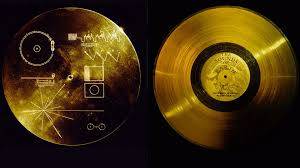
Timeline of the Voyager missions, 1977-present
Share this:.
- Click to share on Facebook (Opens in new window)
- Click to share on Reddit (Opens in new window)
- Click to share on Twitter (Opens in new window)
- Things to Do
- Marketplace
1979: Voyager 1 makes its closest approach to Jupiter in March, and Voyager 2 makes its closest approach in July.
1980: Voyager 1 flies by Saturn and then begins its trip out of the solar system.
1981: Voyager 2, which is traveling at a lower speed than Voyager 1 and on a different trajectory, flies by Saturn.
1986: Voyager 2 has the first-ever encounter with Uranus.
1989: Voyager 2 becomes the first spacecraft to observe Neptune before starting its own trip out of the solar system.
1990: The last Voyager images are sent back to Earth in the form of a portrait of the solar system.
1998: Voyager 1 passes Pioneer 10 to become the most distant manmade object in space.
2004: Voyager 1 crosses termination shock, the point near the outer edge of the solar system where the solar winds die down.
2007: Voyager 2 crosses the termination shock.
2011: In December, NASA announces Voyager 1 has entered the stagnation zone, described as a “cosmic purgatory” at the edge of the solar system.
Future: In a timeframe ranging from a few months to a few years, scientists expect Voyager 1 to break through the heliopause, the final boundary between our solar system and interstellar space. Voyager 2 could trail years behind Voyager 1 in entering interstellar space.
Source: NASA
More in News

Trail Ridge Road in Rocky Mountain National Park open for the season

Cyclist pulled from creek after reportedly crashing in Boulder Canyon

SUBSCRIBER ONLY
Local news | longmont latinx voices opens registration for middle school football program.

Crime and Public Safety | Man accused of August drive-by shooting in Longmont sentenced to probation
Screen Rant
Star trek: voyager created its own version of wandavision almost 30 years ago.

Your changes have been saved
Email Is sent
Please verify your email address.
You’ve reached your account maximum for followed topics.
Star Trek: Voyager Cast & Character Guide
Law & order: organized crime's new home could make stabler & benson's reunion a logistical nightmare, fbi: international's best team leader was already on fbi: most wanted.
- Star Trek: Voyager had a version of WandaVision in an episode from season 3.
- Voyager's finale "Endgame" also shares similarities with Avengers: Endgame in plot and villains.
- Both Star Trek: Voyager and the MCU have more similarities than are initially apparent.
Star Trek: Voyager did a version of WandaVision nearly 30 years before the Marvel Cinematic Universe. Although Star Trek and the MCU are both huge franchises, there generally aren't a lot of similarities between the two. The MCU took a decidedly science fiction lean during its first three phases but in a different way than the Star Trek timeline , which depicts a utopian vision of the future while the MCU runs concurrently with the present. However, one MCU show that did seemingly borrow a story idea from Star Trek was WandaVision .
Kicking off Phase Four of the MCU in 2021, WandaVision followed Wanda Maximoff (Elizabeth Olsen) and Vision (Paul Bettany) living a seemingly idyllic sitcom-inspired life in small-town New Jersey. Through a slow build-up, the show revealed that in her grief over Vision's death, Wanda had used her Chaos Magic to create their marital bliss, inadvertently enslaving the entire town of Westview in the process to act as characters in her fantasy. Although not a direct copy, this premise is a lot like a season 3 episode of Voyager involving the Doctor (Robert Picardo) .
In its seven seasons, Star Trek: Voyager introduced many new faces to the Trek universe. Here is a breakdown of the show's main cast and characters.
Voyager’s Season 3 Episode “Real Life” Is Like Star Trek’s Version Of WandaVision
"real life" has a lot of similarities to the mcu show.
Voyager season 3, episode 22, "Real Life" bears a lot of similarities to WandaVision in premise. Although there was no mystery about how the Doctor's fantasy in "Real Life" existed thanks to Star Trek 's holodeck , both he and Wanda created an idealized version of family life for themselves to experience something they felt like they couldn't have any other way . Additionally, the sitcom aspect of WandaVision and how it progresses through different eras is also loosely reflected in "Real Life." The quote from Robert Picardo below talking about the episode's premise unintentionally sums up these similarities well:
"The first act of that script is like a '70s sitcom. It's like The Partridge Family or The Brady Bunch. Everything about it is like an old sitcom. Then the second act – after The Doctor's family program has been randomized, so that everybody's not so perfect in their behavior – became like a '90s sitcom, where everybody's dissing dad. Then, suddenly, it took this odd turn and became very dramatic. And the last part of the show is like an ER episode, where a child is going to die. It starts out so silly and so ridiculous, then becomes quite touching by the end."
Of course, WandaVision is not a one-to-one copy of "Real Life," and likely wasn't directly inspired by the Star Trek episode. The show relies much more heavily on the question of why Westview exists and has a clear villain whereas "Real Life" does not. The theme of grief and loss is also much more present throughout. However, both "Real Life" and WandaVision end up giving their protagonist a greater understanding of their own humanity and the emotional/mental trials they could withstand. Interestingly, "Real Life" isn't even the only Voyager episode with a connection to the MCU.
Star Trek: Voyager's "Endgame" Beat Avengers By 28 Years
Voyager also did "endgame" before the avengers franchise.
Similarly to the explosive final film of the MCU's Phase Three, Voyager ’s series finale was also called “Endgame.” The chess term is a fairly popular title for finales, but the similarities between "Endgame" and Avengers: Endgame don't end there. Both stories involved time travel to reverse - or in Voyager ’s case prevent - the deaths of several important characters . In the MCU, the scale was much larger thanks to the Blip, but Admiral Janeway's (Kate Mulgrew) plan to prevent the deaths of Seven of Nine (Jeri Ryan) and Chakotay (Robert Beltran) in Voyager was just as important.
Another big similarity between the two projects was their respective villains. Although their motivations differed widely, Thanos (Josh Brolin) and the Borg Queen (Alice Krige) are fairly comparable big bads in terms of their relative importance to their respective franchises. Thanos is perhaps the most substantial villain the MCU has created to date, and the Borg Queen is the head of Star Trek 's biggest enemy. Despite many differences, Star Trek: Voyager and the MCU are a lot more similar than they might appear at first glance.
Source: Braving the Unknown: Season Three , Voyager season 3 DVD special features.
Star Trek: Voyager
*Availability in US
Not available
The fifth entry in the Star Trek franchise, Star Trek: Voyager, is a sci-fi series that sees the crew of the USS Voyager on a long journey back to their home after finding themselves stranded at the far ends of the Milky Way Galaxy. Led by Captain Kathryn Janeway, the series follows the crew as they embark through truly uncharted areas of space, with new species, friends, foes, and mysteries to solve as they wrestle with the politics of a crew in a situation they've never faced before.
WandaVision
WandaVision, the Marvel Cinematic Universe’s first TV show on Disney+, first aired in 2021. The series kicked off the MCU’s Phase 4 and brought back Elizabeth Olsen as Wanda Maximoff, aka the Scarlet Witch, and Paul Bettany as Vision. WandaVision strayed away from Marvel’s typical formula, this time formatting itself more like a classic sitcom as Wanda struggles to cope with the death of Vision.

Discovery: Why Dr. Kovich's Real Name Has Major Star Trek Implications
- Star Trek: Discovery revealed Dr. Kovich is Agent Daniels, which connects him to Star Trek: Enterprise.
- Played by David Cronenberg, Dr. Kovich is a cultural historian, perfect for Star Trek: Strange New Worlds.
- The inclusion of Agent Daniels ties Discovery to past Star Trek series, offering fun new connections.
The following contains spoilers for Star Trek: Discovery Season 5, now streaming on Paramount+ .
The series finale of Star Trek: Discovery provides answers to the ongoing mission of Season 5, what happens to Captain Michael Burnham and even pays off an old Short Treks episode. However, one scene involving the mysterious Dr. Kovich reveals his "real name," which ties him back to the beginnings of Starfleet and, possibly, every other series. It's an interesting decision, raising questions about whether or not one Starfleet Time Agent is actually Star Trek 's first immortal.
Dr. Kovich is already a recognizable face, played by acclaimed director and actor David Cronenberg. When asked what brought him to Discovery , he told Star Trek Explorer magazine, "I like to say…I'm cheap and I'm available and I live in Toronto" where the series films. Producer Alex Kurtzman reached out to casting directors who also worked with him, asking if he'd like a role. Since Season 3, Cronenberg has appeared in 10 episodes, and he may possibly show up in the new series Star Trek: Starfleet Academy . Yet, in his final Discovery scene, Kovich reveals his real name is Agent Daniels, a key player in Star Trek 's past.

Who Is Doctor Kovich on Star Trek: Discovery?
Why michael burnham was right to violate star trek's most sacred rule.
In Star Trek: Discovery Season 5, Captain Michael Burnham violates a major Federation rule, but was right to do so for a reason that's not so obvious.
Dr. Kovich first appeared in Star Trek: Discovery in Season 3, overseeing the interrogation of Philippa Georgiou, the former Terran Emperor . After she caused his holographic interrogators to glitch, he revealed he was fascinated by Star Trek 's Mirror Universe. He said that Terrans were revealed to have a genetic predisposition for violence and cruelty, but Georgiou seemed to believe he was lying. Later, he helped Dr. Hugh Culber figure out Georgiou was dying because of her presence in the Prime Timeline's future. He also casually revealed that the Kelvin Timeline was "canon" and known to the Prime Universe's Federation.
In Season 4, Dr. Kovich also showed up to talk Lieutenant Sylvia Tilly into joining Starfleet Academy . The institution was shut down when the Burn made warp travel almost impossible in the 32nd Century. After the USS Discovery crew solved that mystery and found a planet ostensibly made of dilithium, it was reopened. He was consulting with the Academy, but he also is a trained physician, specializing in "cognitive sciences." According to his TriCom Badge, he holds the rank of Commodore in Starfleet, though his actual job isn't so clear.
In the Season 5 Premiere, he issued the Red Directive that sent the USS Discovery on their hunt for the Progenitors' technology. He traveled with them on the ship in the first episode. When Michael Burnham failed to retrieve Dr. Vellek's journal, containing the location of the first clue, she convinced him to send the ship on their quest. It doesn't seem like Section 31 still exists in the 32nd Century. However, Dr. Kovich is privy to classified secrets, and he seems to be doing the job Stafleet's clandestine agency once did.
How Doctor Kovich Revealed He Was Agent Daniels
10 star trek time travel stories that changed canon.
After 60 years, Star Trek's timeline has become complex. From Yesterday's Enterprise to Past Tense to Future's End, these stories changed the canon.
After Michael Burnham made the choice to destroy the Progenitors' technology, she went back to Kovich's office to talk to him. She used the object he gave her when issuing the Red Directive, a transparent infinity symbol with a small sphere traveling through it. Burnham tried to give it back to him, but he told her to keep it. "I've lived many years, captain," he said, adding, "And many lives. I've met few who've impressed me and aggravated me as much as you." It's also revealed that he plans to give Moll the choice to work for him as one of his agents rather than spending her time in Starfleet prison .
Kovich mentioned the Temporal War from Enterprise when the USS Discovery arrived in the 32nd Century, accusing them of possibly being involved in that fight. While that seemed like a fun Easter egg at first, it turns out to be more personal for him. Burnham recognizes that "Kovich" is a code name, asking him what he's really called. He introduces himself as Agent Daniels, which fans of Star Trek: Enterprise will recognize as the name of the Time Agent who was stationed on the NX-01 Enterprise for a time .
He also identifies his ship as the USS Enterprise, which could suggest Cronenberg's Daniels, or a younger, recast version, might appear on Star Trek: Strange New Worlds at some point. However, the Star Trek Easter eggs in his office suggest he's been active throughout the canon. There is a shot of a baseball on a stand just like Captain Benjamin Sisko kept on his desk on Deep Space 9. There is a bottle of wine from Jean-Luc Picard's family vineyard on display. He also seems to have come into possession of the visor Geordi La Forge wore in Star Trek: The Next Generation and the first film.
Who Is Agent Daniels in Star Trek?
Star trek theory: picard retconned the divisive enterprise series finale.
One shot of the NX-01 in Star Trek: Picard suggests the Star Trek: Enterprise series finale didn't happen the way fans think - and that may be good.
Introduced during the first season of Enterprise , Crewman Daniels (Matt Winston) was revealed to be a Time Agent stationed on the NX-01 . The Temporal Cold War was underway during that series, and agents of the opposing side tried to stop the historic voyage of Starfleet's first Warp 5 vessel. He was embedded in the past to capture the Sulaban cabal leader Silik. Captain Archer and Daniels worked together to stop his plan, but Silik seemingly killed Daniels with a phaser. While this appeared to be the end of Agent Daniels, death in Star Trek is sometimes merely a flesh wound.
The rules of time travel in Star Trek aren't hard and fast, but how Agent Daniels survived remains unclear. He appeared in eight total episodes, including in Season 4 when Archer's actions seemingly helped end the Temporal War. In the two-part Enterprise Season 2 episode "Shockwave," Agent Daniels tries to rescue Archer from certain death by bringing him to the future. This causes other problems, but it also revealed that the young Agent Daniels was based in the 31st Century. Thus, it's not inconceivable that Agent Daniels would've lived into the late 32nd Century where Seasons 3, 4 and 5 of Star Trek: Discovery take place.
Despite dying more than once, Agent Daniels is not Star Trek 's first immortal . However, because of his status as a Time Agent, he's able to travel to the 22nd Century when Enterprise takes place, as well as the 23rd Century of Strange New Worlds or the 24th Century of the second-wave Star Trek series. In the 2021 Star Trek Explorer interview, Cronenberg revealed that Kovich is a kind of "cultural historian," which may mean his status as Time Agent Daniels was known (at least to producers) from his introduction.
What Does It Mean for Star Trek That Doctor Kovich Is Agent Daniels?
A 57-year-old star trek mystery has finally been solved.
The final season of Star Trek: Discovery just solved a franchise mystery that's been left open since a classic episode of The Original Series aired.
When the United Paramount Network failed , Enterprise was the first casualty canceled in Season 4. It's a series that, at the time, didn't get the respect it deserved. Since then, however, projects like Strange New Worlds , Star Trek Beyond and, now, Discovery have all made direct references to the show. By revealing that Dr. Kovich is really Agent Daniels, it marks the first time that a character from Enterprise has reappeared in the Star Trek canon, albeit with a different actor. It also means that since the end of the Temporal War, Daniels has kept watch over Starfleet in his present (and likely the past) ever since.
The inclusion of items from past Star Trek series, like Sisko's ball or Geordi's visor, suggests that Agent Daniels has traveled into other times and settings familiar to fans . Temporal Agents came to visit Benjamin Sisko after he traveled to 2024 and took Gabriel Bell's place in history in the two-part Deep Space Nine episode, "Past Tense." Temporal Agents also interacted with Captain Janeway and Seven of Nine on Star Trek: Voyager . The inclusion of the elder Agent Daniels is just another way that Discovery weaves connections to the universe's past into its narrative.
Still, as Cronenberg said, he's cheap, available and on-site in Toronto. This means that Dr. Kovich, or Agent Daniels, could appear in a future series. Starfleet Academy will be set during the same timeframe as Discovery . However, Strange New Worlds is no stranger to time travel, either. Daniels could show up as a crewmember on the USS Enterprise and play a key role in averting some canon-destroying event. Still, even if he doesn't, Discovery 's nod to Enterprise 's Agent Daniels is a fun way to connect the two eras of Star Trek storytelling.
The complete Enterprise and Star Trek: Discovery series are streaming on Paramount+ .
Star Trek: Discovery
Release Date September 24, 2017
Cast Oyin Oladejo, Emily Coutts, Anthony Rapp, Sonequa Martin-Green, Doug Jones, Mary Wiseman
Main Genre Sci-Fi
Genres Drama, Sci-Fi, Action, Adventure
Rating TV-14

- Transition Guide (Opens in new window)
- Subscribe Now (Opens in new window)
Your Military
- Army Times (Opens in new window)
- Navy Times (Opens in new window)
- Air Force Times (Opens in new window)
- Marine Corps Times (Opens in new window)
- Pentagon & Congress
- Defense News (Opens in new window)
- Israel-Palestine
- Extremism & Disinformation
- Afghanistan
- Benefits Guide (Opens in new window)
- Family Life
- Military Pay Center
- Military Retirement
- Military Benefits
- Discount Depot
- Gear Scout (Opens in new window)
- Military Culture
- Military Fitness
- Military Movies & Video Games
- Military Sports
- Military Communities
- Pay It Forward (Opens in new window)
- Military History
- Salute to Veterans
- Black Military History
- Congressional Veterans Caucus (Opens in new window)
- Military Appreciation Month
- Vietnam Vets & Rolling Thunder
- Service Members of the Year (Opens in new window)
- World War I
- Honor the Fallen (Opens in new window)
- Hall of Valor (Opens in new window)
- Create an Obituary (Opens in new window)
- Medals & Misfires
- Installation Guide (Opens in new window)
- Battle Bracket
- America's Military
- Task Force Violent
- CFC Givers Guide
- Newsletters (Opens in new window)
- Early Bird Brief
- MCON (Opens in new window)
- Long-Term Care Partners
- Navy Federal
A timeline of the US-built Gaza pier and the challenges it’s faced
A string of security, logistical and weather problems has battered the plan to deliver desperately needed humanitarian aid to Gaza through a U.S. military-built pier .
Broken apart by strong winds and heavy seas just over a week after it became operational, the project faces criticism that it hasn’t lived up to its initial billing or its $320 million price tag.
Military’s novel floating pier arrives in Gaza amid security concerns
The gaza aid pier is made possible by an oft-neglected but vital military capability known as joint logistics over-the-shore, or jlots..
U.S. officials say, however, that the steel causeway connected to the beach in Gaza and the floating pier are being repaired and reassembled at a port in southern Israel, then will be reinstalled and working again next week.
While early Pentagon estimates suggested the pier could deliver up to 150 truckloads of aid a day when in full operation, that has yet to happen . Bad weather has hampered progress getting aid into Gaza from the pier, while the Israeli offensive in the southern city of Rafah has made it difficult, if not impossible at times, to get aid into the region by land routes.
Aid groups have had mixed reactions — both welcoming any amount of aid for starving Palestinians besieged by the nearly eight-month-old Israel-Hamas war and decrying the pier as a distraction that took pressure off Israel to open more border crossings, which are far more productive.
It’s “a side-show,” said Bob Kitchen, a top official of the International Rescue Committee.
The Biden administration has said from the start that the pier wasn’t meant to be a total solution and that any amount of aid helps.
“Nobody said at the outset that it was going to be a panacea for all the humanitarian assistance problems that still exist in Gaza,” national security spokesman John Kirby said Wednesday. “I think sometimes there’s an expectation of the U.S. military — because they’re so good — that everything that they touch is just going to turn to gold in an instant.”
“We knew going in that this was going to be tough stuff,” he added. “And it has proven to be tough stuff.”
Before the war, Gaza was getting about 500 truckloads of aid on average every day. The United States Agency for International Development says it needs a steady flow of 600 trucks a day to ease the struggle for food and bring people back from the brink of famine .
The aid brought through the pier was enough to feed thousands for a month, but U.N. data shows it barely made a dent in the overall need of Gaza’s 2.3 million people.
Here’s a look at the timeline of the pier, the problems it faced and what may come next:
March: Announcement and prep
March 7: President Joe Biden announces his plan for the U.S. military to build a pier during his State of the Union address.
“Tonight, I’m directing the U.S. military to lead an emergency mission to establish a temporary pier in the Mediterranean on the coast of Gaza that can receive large shipments carrying food, water, medicine and temporary shelters,” he said.
But even in those first few moments, he noted the pier would increase the amount of humanitarian aid getting into Gaza but that Israel “must do its part” and let more aid in.
March 8: Maj. Gen. Pat Ryder, Pentagon spokesman, tells reporters it will take “up to 60 days” to deploy the forces and build the project.
March 12: Four U.S. Army boats loaded with tons of equipment and steel pier segments leave Joint Base Langley-Eustis in Virginia and head to the Atlantic Ocean for what is expected to be a monthlong voyage to Gaza.
The brigade’s commander, Army Col. Sam Miller, warns that the transit and construction will be heavily dependent on the weather and any high seas they encounter.
Late March: U.S. Army vessels hit high seas and rough weather as they cross the Atlantic, slowing their pace.
April: Construction and hope
April 1: Seven World Central Kitchen aid workers are killed in an Israeli airstrike as they travel in clearly marked vehicles on a delivery mission authorized by Israel.
The strike fuels ongoing worries about security for relief workers and prompts aid agencies to pause delivery of humanitarian assistance in Gaza.
April 19: U.S. officials confirm that the U.N. World Food Program has agreed to help deliver aid brought to Gaza via the maritime route once construction is done.
April 25: Major construction of the port facility on the shore near Gaza City begins to take shape. The onshore site is where aid from the causeway will be delivered and given to aid agencies.
April 30: Satellite photos show the U.S. Navy ship USNS Roy P. Benavidez and Army vessels working on assembling the pier and causeway about 6.8 miles from the port on shore.
May: The pier opens … then closes
May 9: The U.S. vessel Sagamore is the first ship loaded with aid to leave Cyprus and head toward Gaza and ultimately the pier. An elaborate security and inspection station has been built in Cyprus to screen the aid coming from a number of countries.
May 16: Well past the 60-day target time, the construction and assembly of the pier off the Gaza coast and the causeway attached to the shoreline are finished after more than a week of weather and other delays.
May 17: The first trucks carrying aid for the Gaza Strip roll down the newly built pier and into the secure area on shore, where they will be unloaded and the cargo distributed to aid agencies for delivery by truck into Gaza.
May 18: Crowds of desperate Palestinians overrun a convoy of aid trucks coming from the pier, stripping the cargo from 11 of the 16 vehicles before they reach a U.N. warehouse for distribution.
May 19-20: The first food from the pier — a limited number of high-nutrition biscuits — reaches people in need in central Gaza, according to the World Food Program.
Aid organizations suspend deliveries from the pier for two days while the U.S. works with Israel to open alternate land routes from the pier and improve security.
May 24: So far, a bit more than 1,000 metric tons of aid has been delivered to Gaza via the U.S.-built pier, and USAID later says all of it has been distributed within Gaza.
May 25: High winds and heavy seas damage the pier and cause four U.S. Army vessels operating there to become beached, injuring three service members, including one who is in critical condition.
Two vessels went aground in Gaza near the base of the pier and two went aground near Ashkelon in Israel.
May 28: Pentagon spokeswoman Sabrina Singh says large portions of the causeway are being pulled from the beach and moved to an Israeli port for repairs. The base of the causeway remains at the Gaza shore.
She also says that aid in Cyprus is being loaded onto vessels and will be ready to unload onto the pier once it is back in place.
May 29: Two of the Army vessels that ran aground in the bad weather are now back at sea and the other two near the pier are being freed, with the aid of the Israeli navy.
What’s next?
In the coming days, the sections of the causeway will be put back together, and by the middle of next week will be moved back to the Gaza shore, where the causeway will once again be attached to the beach, the Pentagon says.
“When we are able to re-anchor the pier back in, you’ll be able to see that aid flow off in a pretty steady stream,” Singh said Tuesday. “We’re going to continue to operate this temporary pier for as long as we can.”
AP writer Ellen Knickmeyer in Washington contributed.
In Other News
Marine vet who hurt cop at US Capitol sentenced to 5 years in prison
John george todd iii was a marine from 2009 to 2013 and served in afghanistan, his family said..
Retired Navy four-star admiral arrested in bribery scheme
Retired adm. robert burke served as the vice chief of naval operations and the chief of naval personnel. he faces up to 30 years in prison..
Navy Selected Reserve officer dies during physical readiness test
Fair winds and following seas, cmdr. martin p. schaefer..
VA chief to address bonus scandal next week at House hearing
Va's top leader is expected to face harsh questioning about mistakes made in awarding nearly $11 million in senior executive bonuses last year..
Feds allege school district barred reservist from resuming his job
Doj officials alleged wednesday that oklahoma city schools are violating federal law by refusing to let an air force reservist return to teaching..
share this!
May 30, 2024
This article has been reviewed according to Science X's editorial process and policies . Editors have highlighted the following attributes while ensuring the content's credibility:
fact-checked
trusted source
How much water would a self-sustaining moonbase need?
by Laurence Tognetti, Universe Today
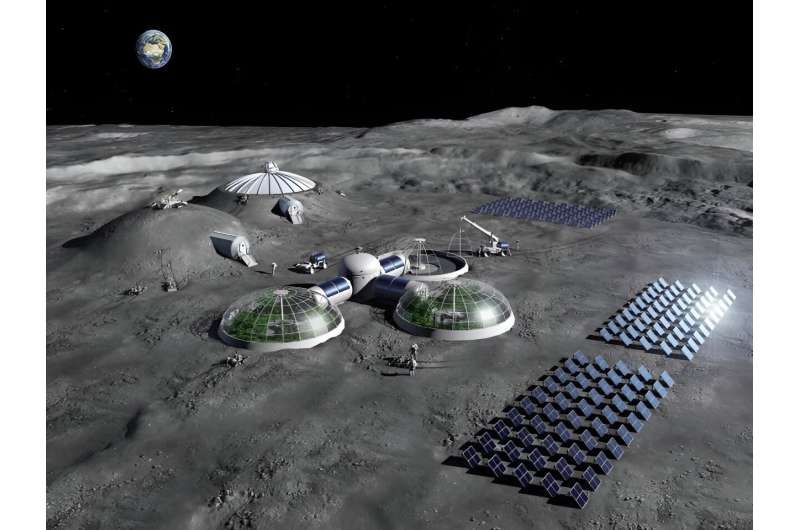
As humanity returns to the moon in the next few years, they're going to need water to survive. While resupplies from Earth would work for a time, eventually the lunar base would have to become self-sustaining? So, how much water would be required to make this happen?
This is what a study recently posted to the arXiv preprint server hopes to address as a team of researchers from Baylor University explored water management scenarios for a self-sustaining moonbase, including the appropriate location of the base and how the water would be extracted and treated for safe consumption using appropriate personnel.
Here, Universe Today discusses this research with Dr. Jeffrey Lee, who is an assistant adjunct professor in the Center for Astrophysics, Space Physics & Engineering Research at Baylor University, and lead author of the study, regarding the motivation behind the study, significant results, the importance of having a self-sustaining moonbase, and what implications this study could have for the upcoming Artemis missions. Therefore, what is the motivation behind this study?
Dr. Lee tells Universe Today, "This paper is actually an eclectic diversion for me from my astrophysics research on primordial black holes, early universe cosmology, breakthrough propulsion physics, and my geophysics research on asteroid impacts. If human missions throughout the solar system, particularly to Mars, are to be realized, then a permanent lunar facility seems to be a logical early step."
For the study, the researchers investigated water management requirements for a 100-person self-sustaining lunar base measured at 500 m x 100 x 6 m (1640 ft x 328 ft x 20 ft), including the location of the lunar base near water ice deposits, the technology required to convert the water ice to water vapor (since liquid water can't exist on the moon), and the technology required for water treatment and recovery that would result in safe consumption for the 100-person base. The study used the current water usage estimates for American households, which is approximately 100 gallons per day (GPD) per person, which includes cleaning, cooking, drinking, flushing toilets, and washing clothes.
Additionally, the researchers examined the amount of water required for agricultural, technical, and overall needs for the lunar base. Regarding the location of the lunar base, the researchers deduced that the best location for the base would be either near, or exactly on, the Shackleton-de Gerlache Ridge, which is located at 89.9°S 0.0°E, or almost directly on the lunar south pole. The reason this location is ideal for water ice deposits is because Shackleton Crater resides within a permanently shadowed region (PSR), meaning it is shrouded in permanent darkness due to the moon's small axial tilt, and water ice has potentially built up over billions of years.
In the end, the team concluded the water requirements for the 100-person lunar base for human, agricultural, and technical needs are 12.3, 72, and 2 acre-feet per year. For context, one acre-foot is equivalent to approximately 326,000 gallons, so a 100-person lunar base would need more than 4,000,000 gallons per year for human needs , more than 23,000,000 gallons per year for agricultural needs, and 652,000 gallons per year for technical needs. So, based on these findings, what were the most significant results from this study, and what follow-up studies are currently in the works or being planned?
Dr. Lee tells Universe Today, "There is good evidence that sufficient water exists on the moon to support a permanent lunar colony, and the acquisition, treatment, and distribution of the lunar water can be achieved with current technology. An appropriate administrative structure will be necessary to oversee all aspects of lunar water. The relative scarcity and management of water on the moon can potentially provide insight for improving the management of water on Earth. The next study for my group will be to investigate the ways in which the management of lunar water could help to improve terrestrial water management. However, the timeline for this research is yet to be determined."
The study discusses in-situ resource utilization (ISRU), which is using available, on-site resources for both sustainability and survivability. In this case, using water ice deposits on the moon, and specifically near the south pole of the moon, to meet the water needs of a 100-person, self-sustaining lunar base. The potential for NASA using ISRU has gained considerable traction in the last few years since sending water from the Earth to the moon could prove to be extremely costly. But aside from the financial risks, if a resupply mission gets delayed or fails on the way to the moon, the crew could face significant danger. Therefore, learning to "live off the land" for a lunar base could prove to be a viable, long-term option for mitigating the need of resupply missions from Earth. But what additional importance could a self-sustaining moonbase also provide?
Dr. Lee tells Universe Today, "Over the years, there has been a groundswell of excitement at the prospect of colonizing Mars. Indeed, at present, we are conceivably able to mount a short-term human voyage to the Red Planet in which the astronauts would collect samples, conduct experiments, plant flags, and when the next launch window occurs, return to Earth. However, the permanent colonization of Mars is much more ambitious and challenging. Mars is much farther away than the moon, requiring nine months to get there and a round trip time of 21 months (a 3-month stay on Mars is needed until the next launch window arrives)."
NASA's goal is to send humans to Mars through the agency's moon to Mars Architecture, which is an elaborate, years-long endeavor to develop the necessary technologies on the moon for use during a crewed mission to the Red Planet. This includes science, infrastructure, transportation, habitation, and operations, just to name a few. However, as noted, while we can (possibly) send humans to the Red Planet for short-term stays with our current technology, a long-term human presence on Mars would require significantly more time and resources.
Dr. Lee tells Universe Today, "Beyond low Earth orbit, the moon is a logical next destination. Lunar colonization is technologically achievable, and in comparison to Martian colonization, it is far easier. Being capable of establishing a moonbase seems like an obvious prerequisite for establishing a Mars base. Furthermore, the moon would be an excellent jumping off point for further solar system colonization, including potentially the eventual establishment of small colonies in the interiors of Near-Earth Asteroids. Additionally, some have suggested that the moon is an ideal location from which the interception of Earth-bound asteroids could be conducted."
This study comes as NASA's Artemis program plans to land the first woman and person of color on the lunar surface in the next few years. The current landing sites of the Artemis missions are near the south pole to access nearby water ice deposits within the aforementioned PSRs and could be ideal to develop ISRU technologies that can also be used on future Mars crewed missions, as well. Therefore, what implications could this study have for the upcoming Artemis missions?
"Short term lunar visits, such as the planned Artemis missions would not require lunar water," Dr. Lee tells Universe Today. "In these instances, sufficient water could be brought from Earth. However, if at some point in the future, a lunar colony were to become a priority, future Artemis missions could serve to provide valuable in situ information about the presence and abundance of lunar water, particularly at the lunar south pole and in proximity to the Shackleton Crater (an ideal area for a moonbase)."
Journal information: arXiv
Provided by Universe Today
Explore further
Feedback to editors

New vestiges of the first life on Earth discovered in Saudi Arabia
12 hours ago

Mussels downstream of wastewater treatment plant contain radium, study reports
13 hours ago

A new way to see viruses in action: Super-resolution microscopy provides a nano-scale look
14 hours ago

Martian meteorites deliver a trove of information on red planet's structure

New imager acquires amplitude and phase information without digital processing
15 hours ago

AI helps scientists understand cosmic explosions

'Forever chemical' discovery can aid drinking water treatment

Mountain building linked to major extinction event half a billion years ago

News from 'El Gordo': Study suggests dark matter may have collisional properties after all

Clues to mysterious disappearance of North America's large mammals 50,000 years ago found within ancient bone collagen
Relevant physicsforums posts, solar activity and space weather update thread.
6 hours ago
Will we ever communicate with extraterrestial life in a reasonable time frame?
The james webb space telescope.
21 hours ago
Some photos of the Moon
Retro/prograde flyby galaxies and their bar formation, are some objects in the night sky just older images of other objects.
More from Astronomy and Astrophysics
Related Stories

NASA's moon-observing CubeSat is ready for Artemis launch
Aug 8, 2022

Wireless power transmission could enable exploration of the far side of the moon
Apr 11, 2024

NASA wants to learn to live off the land on the moon
Nov 13, 2023

China's Chang'e-7 will deploy a hopper that jumps into a crater in search of water ice
Aug 4, 2023

NASA Artemis1 to carry ASU CubeSat into space
Aug 26, 2022

Video: NASA's Artemis astronaut Victor Glover
Sep 27, 2021
Recommended for you

Glimpses of a volcanic world: New telescope images of Jupiter's moon Io rival those from spacecraft
16 hours ago

An outlandish molecule may be lurking inside Uranus and Neptune, affecting their magnetic fields

Video: Fly across Nili Fossae with ESA's Mars Express

ISS research shows spaceflight affects tumor-bearing fruit fly hosts and their parasites

Moon orbiting 'Dinky' asteroid is actually two tiny moons stuck together
May 29, 2024
Let us know if there is a problem with our content
Use this form if you have come across a typo, inaccuracy or would like to send an edit request for the content on this page. For general inquiries, please use our contact form . For general feedback, use the public comments section below (please adhere to guidelines ).
Please select the most appropriate category to facilitate processing of your request
Thank you for taking time to provide your feedback to the editors.
Your feedback is important to us. However, we do not guarantee individual replies due to the high volume of messages.
E-mail the story
Your email address is used only to let the recipient know who sent the email. Neither your address nor the recipient's address will be used for any other purpose. The information you enter will appear in your e-mail message and is not retained by Phys.org in any form.
Newsletter sign up
Get weekly and/or daily updates delivered to your inbox. You can unsubscribe at any time and we'll never share your details to third parties.
More information Privacy policy
Donate and enjoy an ad-free experience
We keep our content available to everyone. Consider supporting Science X's mission by getting a premium account.
E-mail newsletter

Plan Your Visit
- Directions & Parking
- Group Reservations
- Cafe By Highway Inn
Facility Rentals
- Accessibility
Signature Galleries Special Exhibitions
Corned Been & Kalo
Ka ʻUla Wena: Oceanic Red
After Hours
Daily Programs
Programs & Events Calendar
Corned Beef & Kalo
Ka ‘ula wena: oceanic red.
- Online Learning Center
- Collections & Research
- Sustainability Initiatives
- Bishop Museum Blog
- Library & Archives
- Book A Field Trip
- Educational Programs
- Educator Resources
Field Trips
Go and grow, join & give, ways to give, e ulu a paʻa, corporate partners, foundations, giving opportunities, make a donation.
- Bishop Museum Press
- Shop Pacifica

Celebrate Micronesia Festival 2024
Saturday, June 15, 2024 9 a.m. – 5 p.m.
Discounted Museum Admission for kamaʻāina and military with ID – $5 per person Members: Free with pre-registration and member card Pre-registration is strongly recommended. Parking on campus: $5 per vehicle
During the 13th Festival of Pacific Arts and Culture, Bishop Museum in partnership with Pacific Islands Development Program, East-West Center, is proud to celebrate Micronesian voices, Micronesian cultures, and Pacific communities. The annual Celebrate Micronesia Festival showcases traditional and contemporary art, dance, fashion, stories, poetry, food, and music of the people and cultures of the Republic of Palau, the Commonwealth of the Northern Marianas, Guåhan (Guam), Yap, Chuuk, Pohnpei, Kosrae, Kiribati and the Republic of the Marshall Islands.
Overall Timeline 8 a.m. Doors open All Day – Cultural Booths, Community Partner Booths, Food & Drinks 9 – 9:45 a.m. Ceremony in Honor of Latte Stones 10 a.m. Festival Opening & Welcoming Remarks 10 – 11 a.m. Mainstage Performances 11 a.m. Storytelling: Poetry & Oral History Readings 11 a.m. Celebrating Indigenous Voices in Film Noon – 1 p.m. Celebrating Micronesian Voices: Panel Conversation Noon – 1 p.m. Main Stage Performances 1 p.m. Storytelling: Student Author Readings 1:30 p.m. Celebrating Indigenous Voices in Film 2 p.m. Closing Mainstage Performances
Ceremony in Honor of Latte Stones Location: Gallery Lawn The Bishop Museum is currently working with the Chamorro community to care for and consider long term stewardship inquiries for the latte stones and other ancestral creations brought to the museum in the 1920s. The latte are considered sacred to the Chamorro people of Låguas yan Gåni (Mariana Islands) who, along with Bishop Museum specialists, have recently cleaned, relocated, and re-presented them in a more dignified manner. In honor of the latte, the Bishop Museum, in partnership with the Pacific Islands Development Program, Bulacheros, and Håfa Adai Club of Hawaii, the working group invites the Chamorro community and friends to participate in a special ceremony on June 15th, 2024 at 9 a.m. on the Gallery Lawns of the Bishop Museum. Prayer and offerings made of natural materials will be gifted.
Mainstage Performances Location: Great Lawn See cultural demonstrations and performances all day.
Storytelling Presentations: MicrONEsia: Voyaging for 4000 Years! Location: Gallery Lawn More than 4,000 years ago, our brave seafaring ancestors set sail against the wind and into the sun—into the unknown abyss of the Pacific Ocean. They set sail in hand carved wooden canoes. Propulsion made possible from wind caught in hand woven pandanus sails and ocean elements. Our masterful navigators were guided by an ancient knowledge of celestial navigation using the stars at night and currents, birds, fish and clouds by day. They landed upon our shores thousands of years ago and with this single historical event, the initial human settlement of the MicrONEsia region began. As their descendants, we are people of the ocean, Remetau or Taotao Tasi. With several of our McrONEsian voyagers slated to attend the 13th Festival of Pacific Arts and Culture, we would like to convene these voyagers to share stories that have been passed on about our seafaring tradition, and their respective vision in charting a course forward for MicrONEsian voyaging. Participants include: Grand Master Navigator Sesario Sewralur (son of Mau Pialug), Master Navigators – Manny Benito & Larry Rigaital, and voyager and canoe carver Juan “Mames” Castro.
Celebrating Indigenous Voices Through Film Location: Atrium of Hawaiian Hall Understanding history and culture is essential to strengthening our community’s resilience and ability to change in the face of the racism and discrimination experienced by Micronesians in Hawaiʻi. Films in Chamorro language that feature stories, customs and traditions will be shown alongside the work of Indigenous Taiwanese filmmakers who tell stories about the reclamation of land and culture. Panelists Michael Q. Ceballos, Rita P. Nauta, and Sayun Simung and moderator Brilyn Aguilar, will discuss perpetuating and celebrating indigenous language and identity through the medium of film. The film screenings and panel discussion during the Celebrate Micronesia Festival offer the community an opportunity to cultivate social justice and harmony through conversation and appreciation.
Cultural Booths: Celebrating Micronesian Voices Location: Great Lawn, Gallery Lawns Visit cultural education booths representing Kiribati, Chuuk, Remetau, Kosrae, Mariana Islands, Palau, and more.
Community Partner Booths Location: Great Lawn, Gallery Lawns AlohaCare, Sienna, LocalsLimited, Twiddle Productions Inc., Kokua Kalihi Valley Comprehensive Family Services – Seams Wonderful, HawaiiKidsCAN, Hawaii Language Roadmap Initiative, Bess Press, Kapi’olani Community College, Leeward Community College, Pacific Drought Knowledge Exchange, UN CIFAL Center of Honolulu, East West Center Education Program, Chaminade University, Honolulu Community College, and more.
_________________________________
This will be a hybrid event, featuring virtual online discussions, streaming of in-person programming at Bishop Museum. For more information visit the Facebook Event Page .
Bishop Museum presents Celebrate Micronesia Festival 2023 in partnership with: Pacific Islands Development Program, East-West Center East-West Center Arts Program Center for Pacific Islands Studies at UH Mānoa Micronesian Community Leaders
- + Add to Google Calendar
- + iCal / Outlook export

Bernice Pauahi Bishop Museum

Share this event
Stay in touch.
Sign up to get the latest Bishop Museum news.

State Museum of Natural and Cultural History of Hawaiʻi
Events Calendar
Privacy Policy
Terms Of Use
Bishop Museum Press Store
Exhibits & Programs
Join & Give
Event Calendar
OPEN DAILY 9 AM – 5 PM
1525 BERNICE STREET HONOLULU, HAWAI’I 96817

First to visit all four giant planets

Voyager 2 is the only spacecraft to visit Uranus and Neptune. The probe is now in interstellar space, the region outside the heliopause, or the bubble of energetic particles and magnetic fields from the Sun.
Mission Type
What is Voyager 2?
NASA's Voyager 2 is the second spacecraft to enter interstellar space. On Dec. 10, 2018, the spacecraft joined its twin – Voyager 1 – as the only human-made objects to enter the space between the stars.
- Voyager 2 is the only spacecraft to study all four of the solar system's giant planets at close range.
- Voyager 2 discovered a 14th moon at Jupiter.
- Voyager 2 was the first human-made object to fly past Uranus.
- At Uranus, Voyager 2 discovered 10 new moons and two new rings.
- Voyager 2 was the first human-made object to fly by Neptune.
- At Neptune, Voyager 2 discovered five moons, four rings, and a "Great Dark Spot."
In Depth: Voyager 2
The two-spacecraft Voyager missions were designed to replace original plans for a “Grand Tour” of the planets that would have used four highly complex spacecraft to explore the five outer planets during the late 1970s.
NASA canceled the plan in January 1972 largely due to anticipated costs (projected at $1 billion) and instead proposed to launch only two spacecraft in 1977 to Jupiter and Saturn. The two spacecraft were designed to explore the two gas giants in more detail than the two Pioneers (Pioneers 10 and 11) that preceded them.
In 1974, mission planners proposed a mission in which, if the first Voyager was successful, the second one could be redirected to Uranus and then Neptune using gravity assist maneuvers.
Each of the two spacecraft was equipped with a slow-scan color TV camera to take images of the planets and their moons and each also carried an extensive suite of instruments to record magnetic, atmospheric, lunar, and other data about the planetary systems.
The design of the two spacecraft was based on the older Mariners, and they were known as Mariner 11 and Mariner 12 until March 7, 1977, when NASA Administrator James C. Fletcher (1919-1991) announced that they would be renamed Voyager.
Power was provided by three plutonium oxide radioisotope thermoelectric generators (RTGs) mounted at the end of a boom.
Voyager 2 at Jupiter
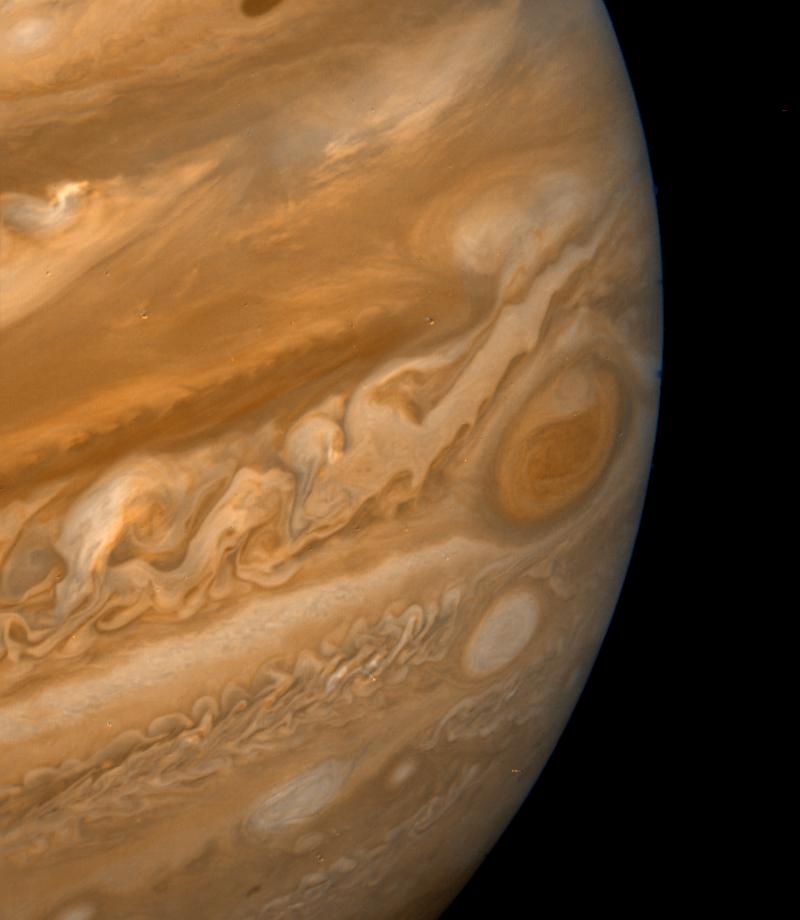
Voyager 2 began transmitting images of Jupiter April 24, 1979, for time-lapse movies of atmospheric circulation. Unlike Voyager 1, Voyager 2 made close passes to the Jovian moons on its way into the system, with scientists especially interested in more information from Europa and Io (which necessitated a 10 hour-long “volcano watch”).
During its encounter, it relayed back spectacular photos of the entire Jovian system, including its moons Callisto, Ganymede, Europa (at a range of about 127,830 miles or 205,720 kilometers, much closer than Voyager 1), Io, and Amalthea, all of which had already been surveyed by Voyager 1.
Voyager 2’s closest encounter to Jupiter was at 22:29 UT July 9, 1979, at a range of about 400,785 miles (645,000 kilometers). It transmitted new data on the planet’s clouds, its newly discovered four moons, and ring system as well as 17,000 new pictures.
When the earlier Pioneers flew by Jupiter, they detected few atmospheric changes from one encounter to the second, but Voyager 2 detected many significant changes, including a drift in the Great Red Spot as well as changes in its shape and color.
With the combined cameras of the two Voyagers, at least 80% of the surfaces of Ganymede and Callisto were mapped out to a resolution of about 3 miles (5 kilometers).
Voyager 2 at Saturn
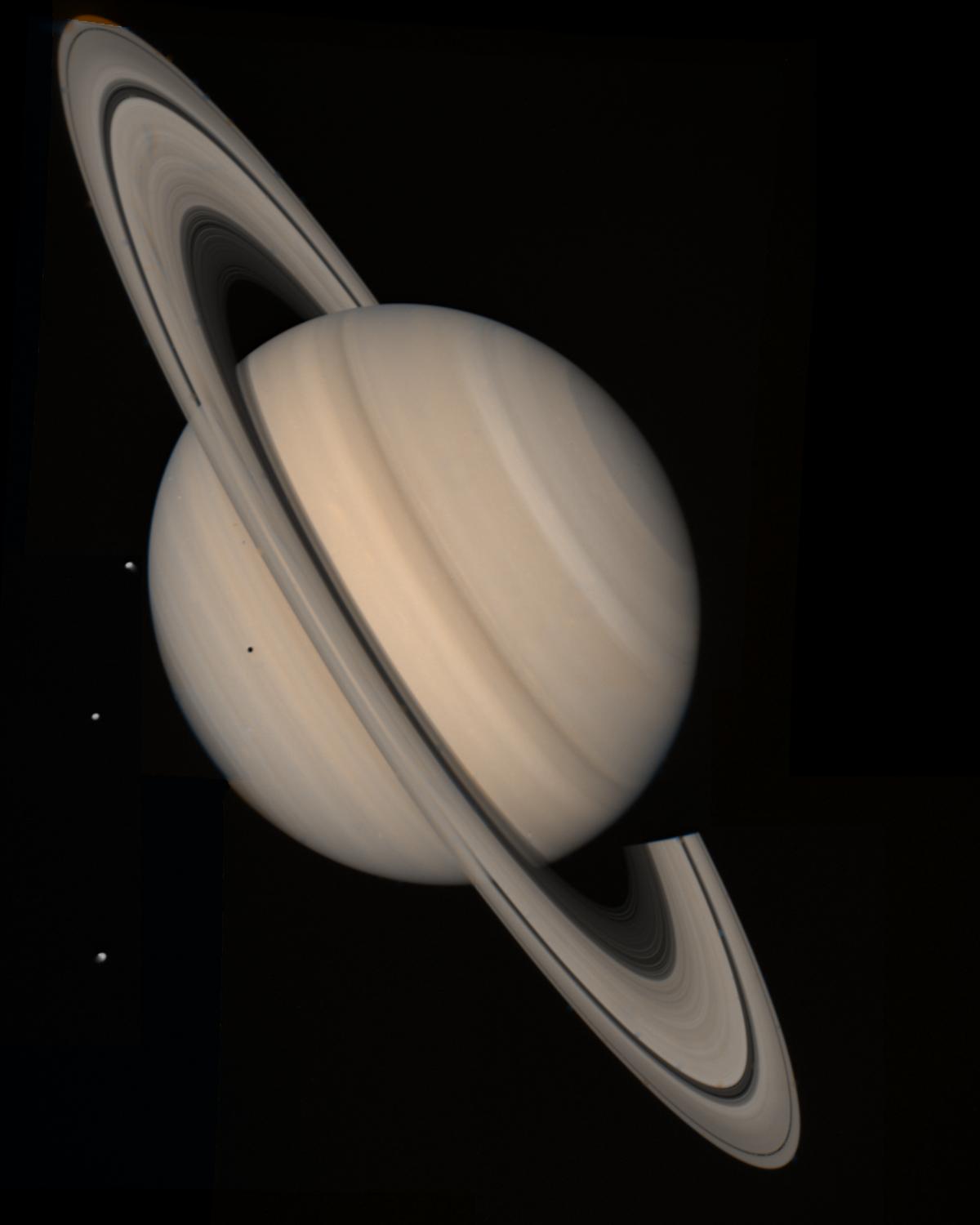
Following a course correction two hours after its closest approach to Jupiter, Voyager 2 sped to Saturn, its trajectory determined to a large degree by a decision made in January 1981, to try to send the spacecraft to Uranus and Neptune later in the decade.
Its encounter with the sixth planet began Aug. 22, 1981, two years after leaving the Jovian system, with imaging of the moon Iapetus. Once again, Voyager 2 repeated the photographic mission of its predecessor, although it actually flew about 14,290 miles (23,000 kilometers) closer to Saturn. The closest encounter to Saturn was at 01:21 UT Aug. 26, 1981, at a range of about 63,000 miles (101,000 kilometers).
The spacecraft provided more detailed images of the ring “spokes” and kinks, and also the F-ring and its shepherding moons, all found by Voyager 1. Voyager 2’s data suggested that Saturn’s A-ring was perhaps only about 980 feet (300 meters) thick.
As it flew behind and up past Saturn, the probe passed through the plane of Saturn’s rings at a speed of 8 miles per second (13 kilometers per second). For several minutes during this phase, the spacecraft was hit by thousands of micron-sized dust grains that created “puff” plasma as they were vaporized. Because the vehicle’s attitude was repeatedly shifted by the particles, attitude control jets automatically fired many times to stabilize the vehicle.
During the encounter, Voyager 2 also photographed the Saturn moons Hyperion (the “hamburger moon”), Enceladus, Tethys, and Phoebe as well as the more recently discovered Helene, Telesto and Calypso.
Voyager 2 at Uranus
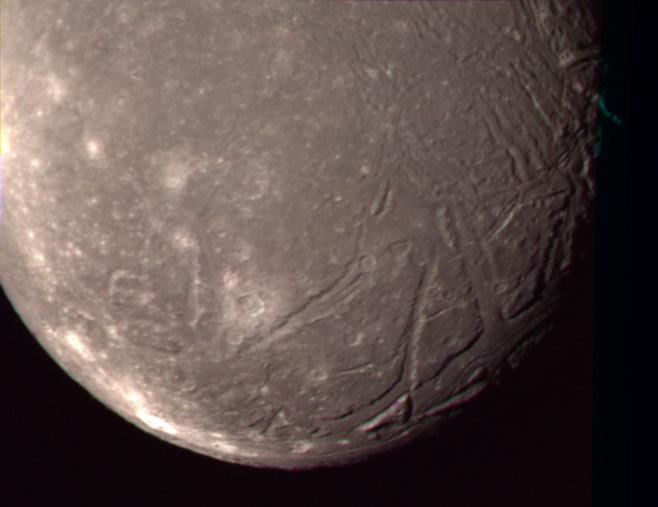
Although Voyager 2 had fulfilled its primary mission goals with the two planetary encounters, mission planners directed the veteran spacecraft to Uranus—a journey that would take about 4.5 years.
In fact, its encounter with Jupiter was optimized in part to ensure that future planetary flybys would be possible.
The Uranus encounter’s geometry was also defined by the possibility of a future encounter with Neptune: Voyager 2 had only 5.5 hours of close study during its flyby.
Voyager 2 was the first human-made object to fly past the planet Uranus.
Long-range observations of the planet began Nov. 4, 1985, when signals took approximately 2.5 hours to reach Earth. Light conditions were 400 times less than terrestrial conditions. Closest approach to Uranus took place at 17:59 UT Jan. 24, 1986, at a range of about 50,640 miles (81,500 kilometers).
During its flyby, Voyager 2 discovered 10 new moons (given such names as Puck, Portia, Juliet, Cressida, Rosalind, Belinda, Desdemona, Cordelia, Ophelia, and Bianca -- obvious allusions to Shakespeare), two new rings in addition to the “older” nine rings, and a magnetic field tilted at 55 degrees off-axis and off-center.
The spacecraft found wind speeds in Uranus’ atmosphere as high as 450 miles per hour (724 kilometers per hour) and found evidence of a boiling ocean of water some 497 miles (800 kilometers) below the top cloud surface. Its rings were found to be extremely variable in thickness and opacity.
Voyager 2 also returned spectacular photos of Miranda, Oberon, Ariel, Umbriel, and Titania, five of Uranus’ larger moons. In flying by Miranda at a range of only 17,560 miles (28,260 kilometers), the spacecraft came closest to any object so far in its nearly decade-long travels. Images of the moon showed a strange object whose surface was a mishmash of peculiar features that seemed to have no rhyme or reason. Uranus itself appeared generally featureless.
The spectacular news of the Uranus encounter was interrupted the same week by the tragic Challenger accident that killed seven astronauts during their space shuttle launch Jan. 28, 1986.
Voyager 2 at Neptune
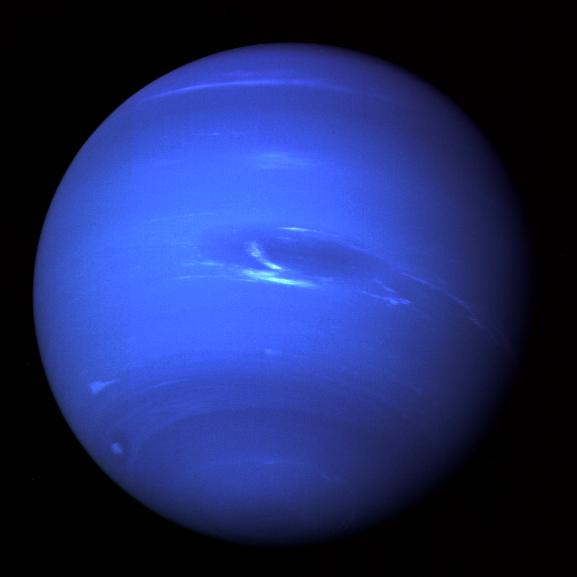
Following the Uranus encounter, the spacecraft performed a single midcourse correction Feb. 14, 1986—the largest ever made by Voyager 2—to set it on a precise course to Neptune.
Voyager 2’s encounter with Neptune capped a 4.3 billion-mile (7 billion-kilometer) journey when, on Aug. 25, 1989, at 03:56 UT, it flew about 2,980 miles (4,800 kilometers) over the cloud tops of the giant planet, the closest of its four flybys. It was the first human-made object to fly by the planet. Its 10 instruments were still in working order at the time.
During the encounter, the spacecraft discovered six new moons (Proteus, Larissa, Despina, Galatea, Thalassa, and Naiad) and four new rings.
The planet itself was found to be more active than previously believed, with 680-mile (1,100-kilometer) per hour winds. Hydrogen was found to be the most common atmospheric element, although the abundant methane gave the planet its blue appearance.
Images revealed details of the three major features in the planetary clouds—the Lesser Dark Spot, the Great Dark Spot, and Scooter.
Voyager photographed two-thirds of Neptune’s largest moon Triton, revealing the coldest known planetary body in the solar system and a nitrogen ice “volcano” on its surface. Spectacular images of its southern hemisphere showed a strange, pitted cantaloupe-type terrain.
The flyby of Neptune concluded Voyager 2’s planetary encounters, which spanned an amazing 12 years in deep space, virtually accomplishing the originally planned “Grand Tour” of the solar system, at least in terms of targets reached if not in science accomplished.
Voyager 2's Interstellar Mission
Once past the Neptune system, Voyager 2 followed a course below the ecliptic plane and out of the solar system. Approximately 35 million miles (56 million kilometers) past the encounter, Voyager 2’s instruments were put in low power mode to conserve energy.
After the Neptune encounter, NASA formally renamed the entire project the Voyager Interstellar Mission (VIM).
Of the four spacecraft sent out to beyond the environs of the solar system in the 1970s, three of them -- Voyagers 1 and 2 and Pioneer 11 -- were all heading in the direction of the solar apex, i.e., the apparent direction of the Sun’s travel in the Milky Way galaxy, and thus would be expected to reach the heliopause earlier than Pioneer 10 which was headed in the direction of the heliospheric tail.
In November 1998, 21 years after launch, nonessential instruments were permanently turned off, leaving seven instruments still operating.
At 9.6 miles per second (15.4 kilometers per second) relative to the Sun, it will take about 19,390 years for Voyager 2 to traverse a single light year.

Asif Siddiqi
Beyond Earth: A Chronicle of Deep Space Exploration
Through the turn of the century, NASA's Jet Propulsion Laboratory (JPL) continued to receive ultraviolet and particle fields data. For example, on Jan. 12, 2001, an immense shock wave that had blasted out of the outer heliosphere on July 14, 2000, finally reached Voyager 2. During its six-month journey, the shock wave had plowed through the solar wind, sweeping up and accelerating charged particles. The spacecraft provided important information on high-energy shock-energized ions.
On Aug. 30, 2007, Voyager 2 passed the termination shock and then entered the heliosheath. By Nov. 5, 2017, the spacecraft was 116.167 AU (about 10.8 billion miles or about 17.378 billion kilometers) from Earth, moving at a velocity of 9.6 miles per second (15.4 kilometers per second) relative to the Sun, heading in the direction of the constellation Telescopium. At this velocity, it would take about 19,390 years to traverse a single light-year.
On July 8, 2019, Voyager 2 successfully fired up its trajectory correction maneuver thrusters and will be using them to control the pointing of the spacecraft for the foreseeable future. Voyager 2 last used those thrusters during its encounter with Neptune in 1989.
The spacecraft's aging attitude control thrusters have been experiencing degradation that required them to fire an increasing and untenable number of pulses to keep the spacecraft's antenna pointed at Earth. Voyager 1 had switched to its trajectory correction maneuver thrusters for the same reason in January 2018.
To ensure that both vintage robots continue to return the best scientific data possible from the frontiers of space, mission engineers are implementing a new plan to manage them. The plan involves making difficult choices, particularly about instruments and thrusters.

National Space Science Data Center: Voyager 2
A library of technical details and historic perspective.

A comprehensive history of missions sent to explore beyond Earth.
Discover More Topics From NASA


- The Contents
- The Making of
- Where Are They Now
- Frequently Asked Questions
- Q & A with Ed Stone
golden record
Where are they now.
- frequently asked questions
- Q&A with Ed Stone
Mission Status
Instrument status.

Where are the Voyagers now?
To learn more about Voyager, zoom in and give the spacecraft a spin. View the full interactive experience at Eyes on the Solar System . Credit: NASA/JPL-Caltech
View Voyager
Space Flight Operations Schedule (SFOS)
SFOS files showing Voyager activity on Deep Space Network (DSN)
2024 Tracking Schedule
2023 tracking schedule, 2022 tracking schedule, 2021 tracking schedule, 2020 tracking schedule, 2019 tracking schedule, 2018 tracking schedule, 2017 tracking schedule, 2016 tracking schedule, 2015 tracking schedule, 2014 tracking schedule, 2013 tracking schedule, 2012 tracking schedule, 2011 tracking schedule, 2010 tracking schedule, 2009 tracking schedule, 2008 tracking schedule, 2007 tracking schedule, 2006 tracking schedule, 2005 tracking schedule, 2004 tracking schedule, 2003 tracking schedule, 2002 tracking schedule, 2001 tracking schedule, 2000 tracking schedule, 1999 tracking schedule, 1998 tracking schedule, 1997 tracking schedule, 1996 tracking schedule, 1995 tracking schedule, 1994 tracking schedule.

IMAGES
VIDEO
COMMENTS
The First Human-Made Object in Interstellar Space. Voyager 1 enters interstellar space, passing beyond the heliopause, which is the boundary between our solar bubble and the matter ejected by explosions of other stars. It is the first time a human-made object crosses the threshold of interstellar space.
The twin Voyager 1 and 2 spacecraft are exploring where nothing from Earth has flown before. Continuing on their more-than-45-year journey since their 1977 launches, they each are much farther away from Earth and the Sun than Pluto. ... Timeline. The Voyager spacecraft have been exploring for decades. Dive deep into the journey with this ...
Mission Overview. The twin Voyager 1 and 2 spacecraft are exploring where nothing from Earth has flown before. Continuing on their more-than-40-year journey since their 1977 launches, they each are much farther away from Earth and the sun than Pluto. In August 2012, Voyager 1 made the historic entry into interstellar space, the region between ...
Timeline. Explore the outer solar system and beyond with the twin Voyager spacecraft using real spacecraft data. NASA explores the unknown in air and space, innovates for the benefit of humanity, and inspires the world through discovery. Ride along with Voyagers 1 and 2 on their epic tour of the outer solar system and beyond.
Voyager 1 has been exploring our solar system since 1977. The probe is now in interstellar space, the region outside the heliopause, or the bubble of energetic particles and magnetic fields from the Sun. Voyager 1 was launched after Voyager 2, but because of a faster route, it exited the asteroid belt earlier than its twin, and it overtook Voyager 2 on Dec. 15, 1977.
Voyager 1 is a space probe launched by NASA on September 5, ... Timeline of travel. Voyager 1 ' s trajectory seen from Earth, diverging from the ecliptic in 1981 at Saturn and now heading towards the constellation Ophiuchus: Date Event 1977-09-05 Spacecraft launched at 12:56:00 UTC.
A poster of the planets and moons visited during the Voyager program. The Voyager program is an American scientific program that employs two interstellar probes, Voyager 1 and Voyager 2.They were launched in 1977 to take advantage of a favorable alignment of the two gas giants Jupiter and Saturn and the ice giants, Uranus and Neptune, to fly near them while collecting data for transmission ...
Voyager Mission Timeline July 9, 2012 35 years and still cruising in Space. Download JPG About JPL Who We Are Executive Council Directors Careers Internships The JPL Story JPL Achievements Documentary Series JPL Annual Report JPL Plan: 2023-2026 ...
Mission timeline: Voyager's landmark moments - BBC Science Focus Magazine.
NASA's twin Voyager probes have become, in some ways, time capsules of their era: They each carry an eight-track tape player for recording data, they have about 3 million times less memory than modern cellphones, and they transmit data about 38,000 times slower than a 5G internet connection.. Yet the Voyagers remain on the cutting edge of space exploration.
Today, 45 years after its launch and 14.6 billion miles from Earth, four of Voyager 1's 11 instruments continue to return useful data, having now spent 10 years in interstellar space. Signals from the spacecraft take nearly 22 hours to reach Earth, and 22 hours for Earth-based signals to reach the spacecraft.
40 Years Ago: Voyager 1 Explores Jupiter. Today, Voyager 1 is the most distant spacecraft from Earth, more than 13 billion miles away. Forty years ago, fairly close to the beginning of its incredible journey through and out of our solar system, it was making its closest approach to Jupiter. Although it was not the first to explore the giant ...
NASA . NASA's Voyager 1 spacecraft launched in 1977 and reached interstellar space 35 years later. Take a look at Voyager 1's bold journey into a new space frontier with this SPACE.com timeline.
Today, Voyager 1 is the most distant spacecraft from Earth, more than 14 billion miles away and continuing on its journey out of our solar system. Forty years ago, it made its closest approach to Saturn. Although it was not the first to explore the giant ringed planet, as the Pioneer 11 spacecraft completed the first flyby in 1979, Voyager ...
Voyager 1 and its twin Voyager 2 are the only spacecraft ever to operate outside the heliosphere, the protective bubble of particles and magnetic fields generated by the Sun. Voyager 1 reached the interstellar boundary in 2012, while Voyager 2 (traveling slower and in a different direction than its twin) reached it in 2018. Mission Type.
NEPTUNE When Voyager flew within 5,000 kilometers (3,000 miles) of Neptune on August 25, 1989, the planet was the most distant member of the solar system from the Sun. (Pluto once again will become most distant in 1999.) Neptune orbits the Sun every 165 years. It is the smallest of our solar system's gas giants.
Voyager 1: A Timeline. NASA. With both Voyager 1 and Voyager 2 having exited the solar system, their current mission objective is to explore the interstellar environment beyond the heliosphere, the region of space controlled by the Sun's magnetic field. Beyond the bow shock created by the solar wind, the spacecraft can chronicle the particles ...
Timeline of the Voyager missions, 1977-present. By Laura Snider. February 10, 2012 at 6:26 p.m. 1977: Voyager 2 is launched in August and Voyager 1 follows in September, returning the first photo ...
Beyond Expectations. Voyager 2 launched on Aug. 20, 1977, quickly followed by Voyager 1 on Sept. 5. Both probes traveled to Jupiter and Saturn, with Voyager 1 moving faster and reaching them first. Together, the probes unveiled much about the solar system's two largest planets and their moons. Voyager 2 also became the first and only ...
Star Trek: Voyager did a version of WandaVision nearly 30 years before the Marvel Cinematic Universe. Although Star Trek and the MCU are both huge franchises, there generally aren't a lot of similarities between the two.The MCU took a decidedly science fiction lean during its first three phases but in a different way than the Star Trek timeline, which depicts a utopian vision of the future ...
In the series finale of Star Trek: Discovery, Dr. Kovich revealed his real name, which establishes his deep connection to Star Trek's canon history.
A timeline of the US-built Gaza pier and the challenges it's faced. By Lolita C. Baldor, The Associated Press. May 29, 2024, 04:28 PM. A string of security, logistical and weather problems has ...
Both Voyager 1 and Voyager 2 have reached "interstellar space" and each continue their unique journey deeper into the cosmos. ... Voyager's Grand Tour Timeline. Mission Status. Voyager 1. Voyager 2. Launch Date. Monday, Sep 5, 1977 12:56:00 UTC. Saturday Aug 20, 1977 14:29:00 UTC. Mission Elapsed Time.
Present Status. As of April 2020, Voyager 1 is at a distance of 22.3 billion kilometers (149.0 AU) from the Sun. Voyager 2 was at a distance of 18.5 billion kilometers (123.6 AU). Voyager 1 is escaping the solar system at a speed of about 3.6 AU per year. Voyager 2 is escaping the solar system at a speed of about 3.3 AU per year.
In the end, the team concluded the water requirements for the 100-person lunar base for human, agricultural, and technical needs are 12.3, 72, and 2 acre-feet per year. For context, one acre-foot ...
An Ohio billionaire has announced plans for a voyage to the Titanic shipwreck, nearly one year after the Titan submersible imploded on a similar journey killing 5. ... Timeline: Severe storms ...
Overall Timeline 8 a.m. Doors open All Day - Cultural Booths, Community Partner Booths, Food & Drinks 8 - 9 a.m. Ceremony in Honor of Latte Stones 9 a.m. Festival Opening & Welcoming Remarks 9:30 a.m. - 11 a.m. Mainstage Performances 11 a.m. Storytelling: Poetry & Oral History Readings 11 a.m. Celebrating Indigenous Voices in Film
Voyager 2 is the only spacecraft to study all four of the solar system's giant planets at close range. Voyager 2 discovered a 14th moon at Jupiter. Voyager 2 was the first human-made object to fly past Uranus. At Uranus, Voyager 2 discovered 10 new moons and two new rings. Voyager 2 was the first human-made object to fly by Neptune.
In the NASA Eyes on the Solar System app, you can see the real spacecraft trajectories of the Voyagers, which are updated every five minutes. Distance and velocities are updated in real-time. For a full 3D, immersive experience click on View Voyagers link below to launch the NASA Eyes on the Solar System app. View Voyager.